
Free Internet access should be a basic human right: Study
Free internet access must be considered as a human right, as people unable to get online -- particularly in developing countries -- lack meaningful ways to influence the global players shaping their everyday lives, according to a new study.
As political engagement increasingly takes place online, basic freedoms that many take for granted including free expression, freedom of information and freedom of assembly are undermined if some citizens have access to the internet and others do not.
New research reveals that the internet could be a key way of protecting other basic human rights such as life, liberty, and freedom from torture -- a means of enabling billions of people to lead 'minimally decent lives'.
Dr. Merten Reglitz, Lecturer in Global Ethics at the University of Birmingham, has published his findings -- the first study of its kind -- in the Journal of Applied Philosophy .
"Internet access is no luxury, but instead a moral human right and everyone should have unmonitored and uncensored access to this global medium -- provided free of charge for those unable to afford it," commented Dr Reglitz.
"Without such access, many people lack a meaningful way to influence and hold accountable supranational rule-makers and institutions. These individuals simply don't have a say in the making of the rules they must obey and which shape their life chances."
He added that exercising free speech and obtaining information was now heavily dependent on having internet access. Much of today's political debate took place online and politically relevant information is shared on the internet -- meaning the relative value these freedoms held for people 'offline' had decreased.
Dr. Reglitz's research attributes to the internet unprecedented possibilities for protecting basic human rights to life, liberty and bodily integrity.
Whilst acknowledging that being online does not guarantee these rights, he cites examples of internet engagement that helped hold Government and institutions to account. These examples include:
- The 'Arab Spring'- new ways of global reporting on government atrocities.
- Documenting unjustified police violence against African Americans in the US.
- #MeToo campaign -- helping to 'out' sexual harassment of women by powerful men.
Dr. Reglitz defines 'moral human rights' as based on universal interests essential for a 'minimally decent life'. They must also be of such fundamental importance that if a nation is unwilling or unable to uphold these rights, the international community must step in.
The study points to a number of important political institutions which have committed to ensuring universal access for their populations, convinced that this goal is affordable:
- The Indian state of Kerala has declared universal internet access a human right and aims to provide it for its 35 million people by 2019.
- The European Union has launched the WiFi4EU initiative to provide 'every European village and city with free wireless internet access around main centres of public life by 2020.
- Global internet access is part of the UN Sustainable Development Goals, with the UN demanding states help to deliver universal Internet access in developing nations.
Dr Reglitz outlines the size of the challenge posed in providing universal internet access, noting that the UN's International Telecommunication Union estimated that, by the end of 2018, 51 percent of the world's population of 7 billion people had access to the Internet.
Many people in poorer parts of the world are still without internet access, but their number is decreasing as technology becomes cheaper. However, internet expansion has slowed in recent years, suggesting universal access will not occur without intentional promotion.
"Universal internet access need not cost the earth -- accessing politically important opportunities such as blogging, obtaining information, joining virtual groups, or sending and receiving emails does not require the latest information technology," commented Dr Reglitz.
"Web-capable phones allow people to access these services and public internet provision, such as public libraries, can help get people online where individual domestic access is initially too expensive."
He added that the human right to internet access was similar to the global right to health, which cannot require globally the highest possible medical treatment, as many states are too poor to provide such services and thus would face impossible demands.
Instead, poor states are called upon to provide basic medical services and work toward providing higher quality health care delivery. Similarly, such states should initially offer locations with public Internet access and develop IT infrastructure that increases access.
According to the NGO The World Wide Web Foundation, founded by World Wide Web inventor Tim Berners-Lee 'affordability' remains one of the most significant, but solvable, obstacles to universal access.
For the Foundation, internet access is affordable if one gigabyte of data costs no more than two percent of average monthly income -- currently some 2.3 billion people are without affordable Internet access.
- Communications
- Computers and Internet
- Computer Programming
- Privacy Issues
- Public Health
- Political Science
- Scientific Conduct
- Massively multiplayer online game
- Water scarcity
- World Wide Web
- United Nations Development Programme
- Social inequality
- Constructal theory
- Western culture
- Cryptography
Story Source:
Materials provided by University of Birmingham . Note: Content may be edited for style and length.
Journal Reference :
- Merten Reglitz. The Human Right to Free Internet Access . Journal of Applied Philosophy , 2019; DOI: 10.1111/japp.12395
Cite This Page :
Explore More
- Two Species Interbreeding Created New Butterfly
- Warming Antarctic Deep-Sea and Sea Level Rise
- Octopus Inspires New Suction Mechanism for ...
- Cities Sinking: Urban Populations at Risk
- Puzzle Solved About Ancient Galaxy
- How 3D Printers Can Give Robots a Soft Touch
- Combo of Multiple Health Stressors Harming Bees
- Methane Emission On a Cold Brown Dwarf
- Remarkable Memories of Mountain Chickadees
- Predicting Future Marine Extinctions
Trending Topics
Strange & offbeat.
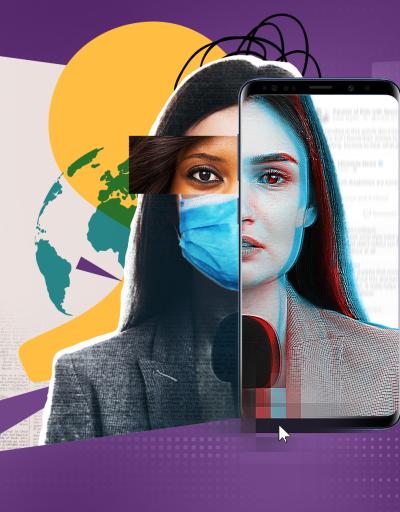
- Issue Briefs
- Partnerships
- Online Report
- Previous Reports
Freedom on the Net
The annual survey conducted by Freedom House offers an analysis of internet freedom around the world. The Freedom on the Net reports produced by the organisation feature an in-depth descriptive text and a numeric country-by-country ranking and assessment of online freedom. The survey's results are transmitted into an interactive map that highlights each country's levels of internet freedom, ranging from not free to partly free, and free. The map also offers information on democracy status at the country level.
Main characteristics
- Category : Media freedom , Media pluralism , Media independance , Safety of journalists , Digital rights
- Keywords : Internet universality , Internet access , Freedom of expression , Press freedom , Access to information , Privacy , Democracy , Governance , Regulation , Surveillance , Censorship , Self-censorship , Imprisonements , Cybercrime , Online violence , Hate speech , Elections , Social media , COVID-19 , Disinformation , Misinformation
- Languages : English
- SDG focus :
- Gender disaggregation : N/A
- Type of source license : Not apply (N/A)
- Name of the organization: Freedom House
- Link to organization: https://freedomhouse.org/
More information about the dataset
- Type of data : Quantitative
- Type of data collection: Survey;Experts
- Year of dataset creation: 2009
- Year of dataset update: 2021
Related items
- Keywords: Internet universality
- Keywords: Internet access
- Keywords: Freedom of expression
- Keywords: Press freedom
- Keywords: Access to information
- Keywords: Privacy
- Keywords: Democracy
- Keywords: Governance
- Keywords: Regulation
- Keywords: Surveillance
- Keywords: Censorship
- Keywords: Self-censorship
- Keywords: Imprisonements
- Keywords: Cybercrime
- Keywords: Online violence
- Keywords: Hate speech
- Keywords: Elections
- Keywords: Social media
- Keywords: COVID-19
- Keywords: Disinformation
- Keywords: Misinformation
- Category: Media freedom
- Category: Media pluralism
- Category: Media independance
- Category: Safety of journalists
- Category: Digital rights
- Data type: Quantitative
- Collection type: Survey
- Collection type: Experts
- Gender disaggregation: N/A
- See more add
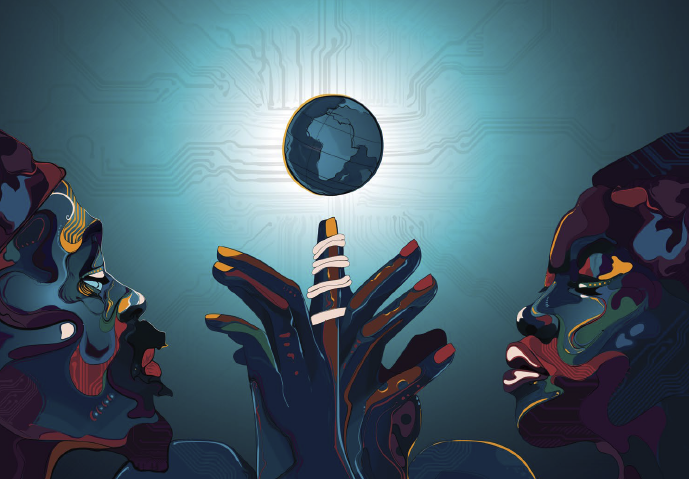
Global Connectivity Report 2022
Achieving universal and meaningful connectivity in the Decade of Action
- Description
The Global Connectivity Report 2022 takes stock of the progress in digital connectivity over the past three decades. It provides a detailed assessment of the current state of connectivity and how close the world is to achieving universal and meaningful connectivity, using a unique analytical framework. It goes on to showcase solutions and good practices to accelerate progress. The second part of the report consists of seven thematic deep dives on infrastructure, affordability, financing, the pandemic, regulation, youth, and data.
Read the press release here .
Download the executive summary in Arabic , Chinese , English , French , Russian , and Spanish .
Copyright © ITU 2022 All rights reserved
Permalink: https://www.itu.int/itu-d/reports/statistics/global-connectivity-report-2022/
Meeting the new connectivity challenge in the Decade of Action
In the last 30 years, the number of Internet users surged from a few million to almost five billion. Yet the potential remains untapped because one-third of humanity remains offline, and many users only enjoy basic connectivity. The Global Connectivity Report 2022 provides a detailed assessment of the current state of connectivity and presents solutions to meet this new imperative.
Did you know?
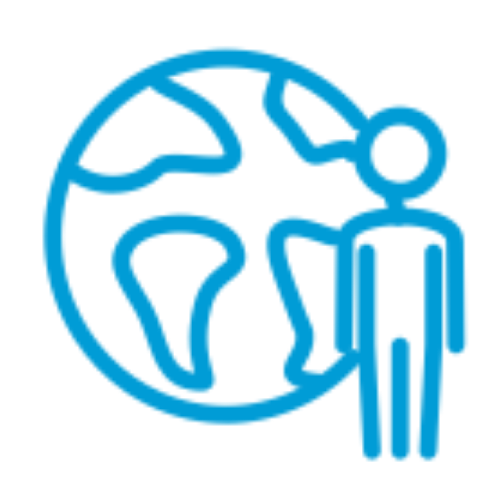
85 per cent
Internet connectivity is a lifeline for refugees, but 85 per cent are hosted in developing countries, and more than a quarter in LDCs, with lower levels of Internet connectivity, making it very challenging to bring them online.
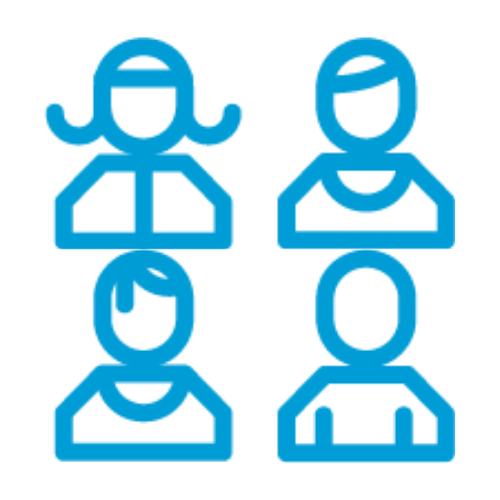
Universal connectivity remains a distant prospect. Internet penetration has reached 95 per cent of the population in only 13 countries.
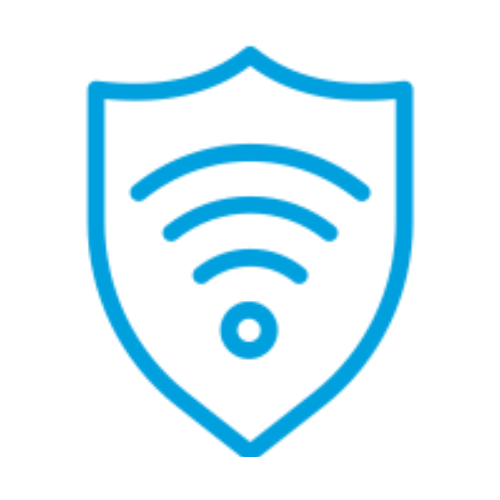
23 per cent
Protecting personal data is a critical issue but only 23 per cent of countries around the world have adequate data protection laws on a par with the EU General Data Protection Regulation (GDPR).

Globally, there were 4,300 data centres connected to the Internet in November 2021.
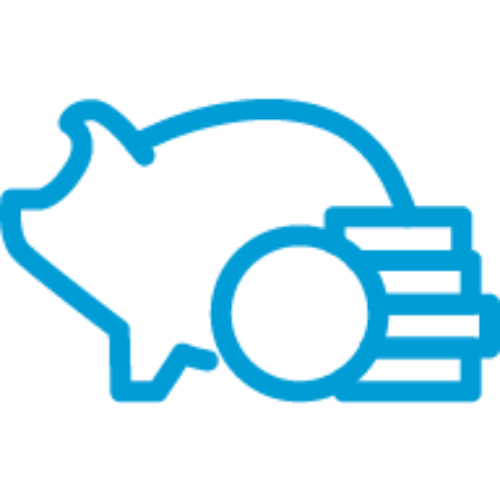
An entry-level mobile-broadband access costs 0.5 per cent of monthly income in high-income economies, but 11.1 per cent of monthly income in low-income economies, that’s 21 times more!
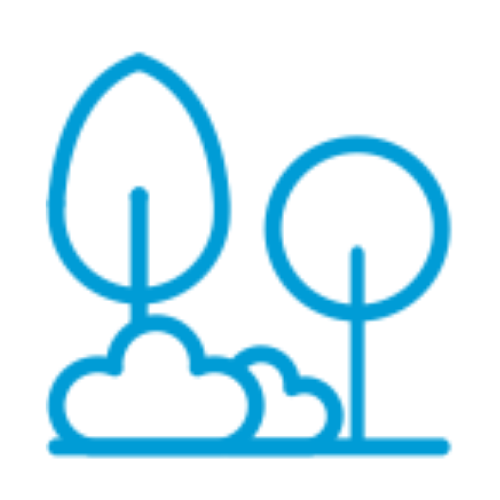
In Africa, 4G coverage in urban areas is four times the coverage in rural areas, partly because commercial deployment of Internet access is not currently viable or seen as viable in these areas, due to high deployment cost and/or low user demand.
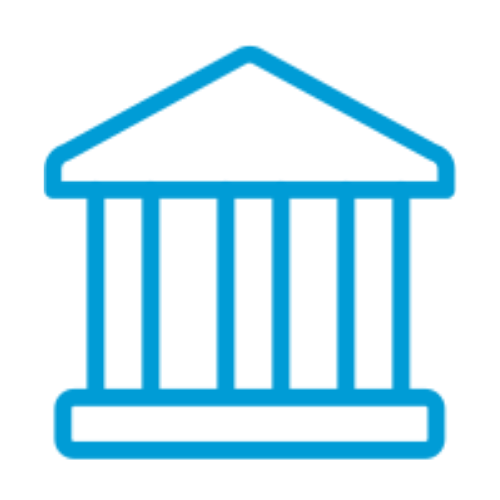
Nearly a quarter of countries worldwide have created safe spaces for regulatory experimentation – regulatory sandboxes, promoting innovation and open participation of stakeholders, and encouraging the adoption of new technologies and business models.

30 per cent
The onset of lockdowns associated with the pandemic resulted in an immediate spike in Internet usage of around 30 per cent, as demand shifted from enterprise to residential.
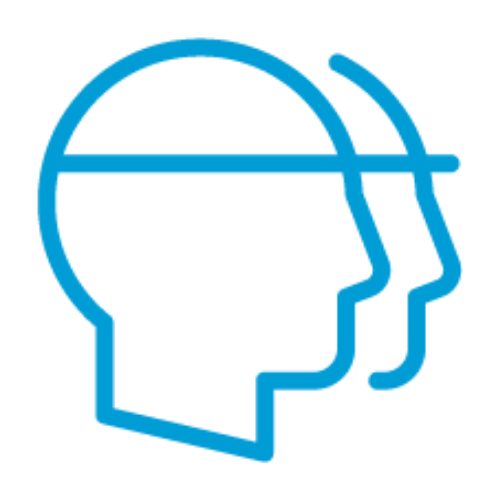
71 per cent
The youth are adept users of the Internet: 71 per cent of the people aged 15-24 use the Internet, compared with 57 per cent for the rest of the population.
Track the digital transformation with the ITU DataHub
The ITU DataHub features over 200 statistical indicators on digital connectivity, trust, markets, governance, sustainability, and affordability. The new data platform offers an intuitive, mobile-friendly interface complete with country and regional profiles and data tables, allowing users to quickly find, view, compare, and download statistics on all aspects of information and communication technologies.
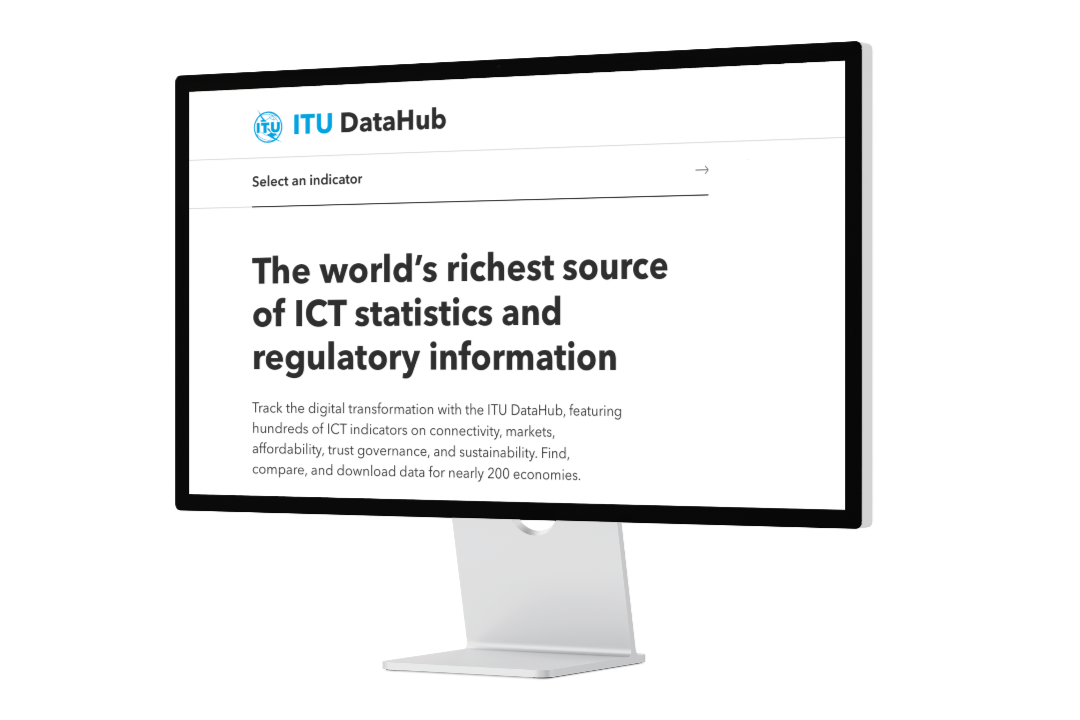

Global Internet Access Initiatives: Breaking Down Digital Divides for the Developing World
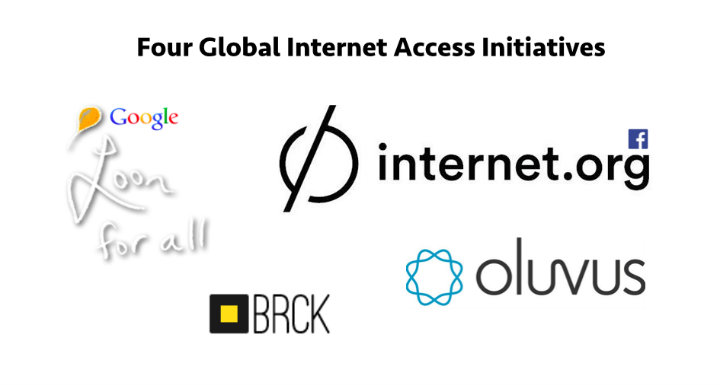
Internet connectivity is increasingly being seen as a human right in our digital world. Today, most of us can’t imagine a world without the Internet, yet only 30% of the world has access to it. Meanwhile, over 85% of the world has cellular coverage and as mobile phones and smartphones become increasingly cheaper , more people are able to access the Internet.
Here are some global initiatives to make the Internet more affordable and accessible to the most remote areas of the world:
1. Facebook’s Internet.org
At the end of August 2013, Mark Zuckerberg introduced Internet.org , a collaborative effort of Facebook, Ericsson, MediaTek, Nokia, Opera, Qualcomm and Samsung to bring internet access to the two-thirds of the world that are still offline.
Recently, Facebook launched the Internet.org app to Airtel customers in Zambia. The app provides access to 13 basic services without data charges; some of the free services include MAMA (Mobile Alliance for Maternal Action) , AccuWeather, and WRAPP (Women’s Rights App). Serving as a channel to women’s right resources, Internet.org has received praise from Executive Director of UN Women, Dr. Phumzile Mlambo-Ngcuka as she said that, “This technology will empower countless women to make a positive impact on their societies and the world.” While the full benefit of internet.org is yet to unfold, it is definitely a step forward in allowing women access to much needed services .
2. Google’s Project Loon
Google’s Project Loon pilot project in New Zealand
Starting with a pilot project in New Zealand in June 2013, Project Loon is Google’s initiative to provide “balloon-powered internet for everyone.” Loon balloons float on the stratosphere and rise and descend with wind patterns to their desired direction of travel, while special antennas in people’s homes allow them to connect with the Loon network for online access. In 2014, Project Loon aims to continue their effort to make internet access possible for hard to reach areas by establishing a ring of connectivity of multiple loons around the 40th parallel.

From the makers of Ushahidi , Crowdmap , and the iHub in Kenya, comes BRCK, a $199 connectivity device designed for use in areas with minimal electricity and internet connections. Built to perform in off-the-grid areas, BRCK works with any 3G enabled SIM card in over 140 countries, has a virtual mobile network operator (vMNO) for connectivity without a SIM card, and also has an external GSM antenna port to support connectivity. Designed by the developing world, for the developing world, BRCK claims that “if it works in Africa, it will work anywhere.”
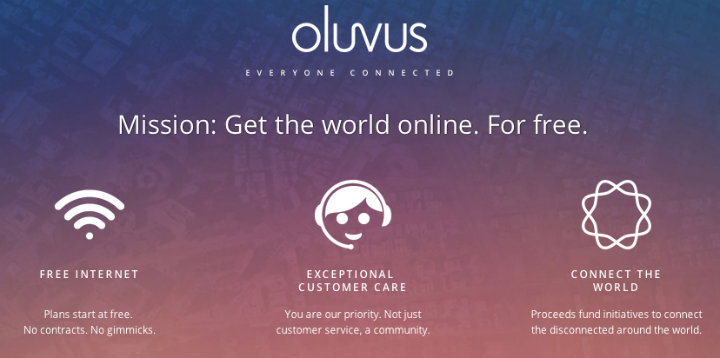
With a mission to “get the world online for free,” Kosta Grammatis is following the footsteps of Facebook and Google in the race to provide free internet connectivity. Set to launch later this year, Oluvus plans to provide basic internet services for free in the U.S. and use the profit from additional services purchased by their customers to fund connectivity projects in the developing world. Oluvus’s first project is set to take place in the world largest refugee camp , Dadaab Refugee camp in Kenya.
What’s next for internet expansion?
As tech giants Facebook and Google tackle the global lack of internet access, they are sure to be ahead of the game. While Facebook’s internet.org’s success is too early to tell, Google commemorated a successful 120-day afloat of one of their Loon balloons on 7th August proving they can withstand harsh weather conditions. Google and Facebook are also expanding their internet initiatives considering drones and satellites to deliver the Internet to more people.
Critics have questioned the end goal of the various internet initiatives that are emerging, labeling them as “gateway drugs” to their product among the unreached population. Despite the critique, the pursuit to provide internet access to the world combined with the power of internet connectivity to change people’s lives cannot be denied.
Challenges lie ahead for these internet initiatives as they deal with regulatory issues such as spectrum/net neutrality as the U.S. Federal Communications Commission (FCC) has been criticized for trying to regulate . Google’s Loon project may face challenges controlling air traffic for its string of loon balloons and BRCK’s may not withstand all crises while claiming to be crisis-friendly. Those unable to afford computers, laptops, or tablets, are able to leapfrog technology to use mobile phones to access the Internet, making it increasingly empowering in the developing world. The future for internet initiatives looks bright as more businesses and organizations look to reach new customers online by providing internet access worldwide.
Where do you think these internet initiatives are heading? Tweet @techchange or comment below to share your thoughts.
Also on TechChange Main
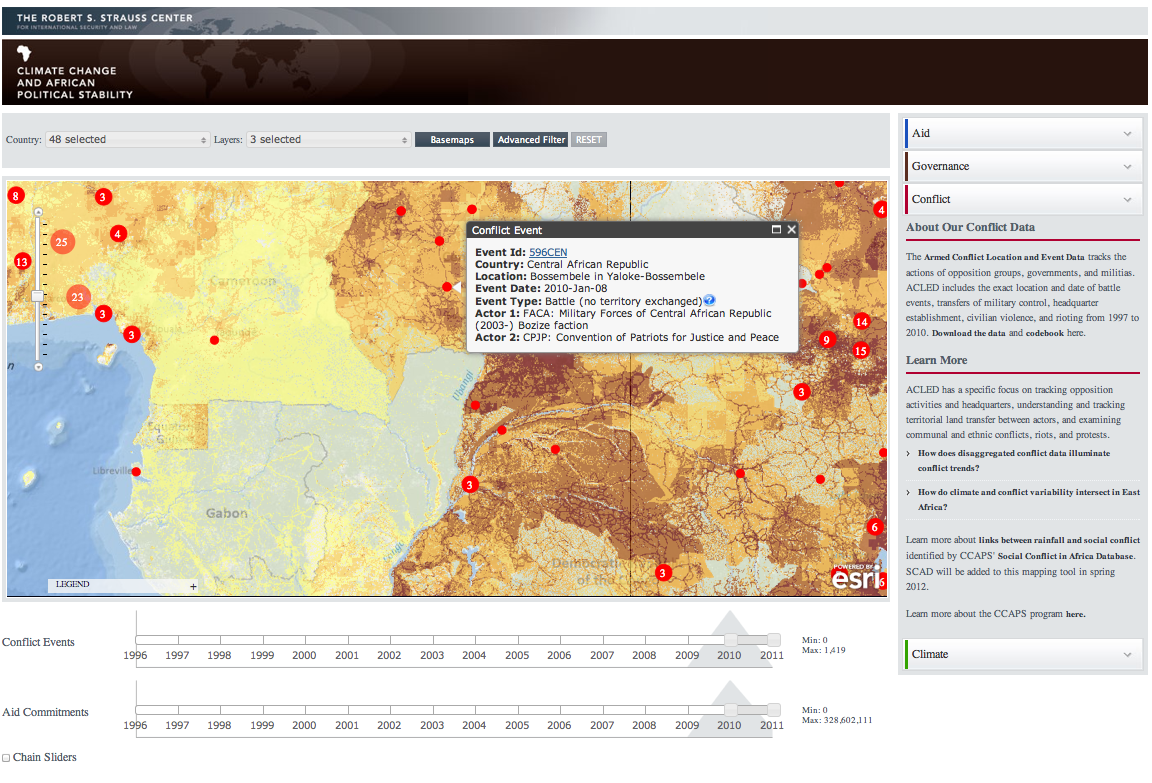
This past Thursday and Friday (May 8 & 9) I participated in the ICTs and Violence Prevention workshop hosted by...

Earlier this month, we sat down with Chamal Mediwaka, a Summer Intern at TechChange in 2016 who shaped much of...
Several of us at TechChange had the privilege of attending a great event MobileActive and the World Bank put on...
Free Internet Access: Policy Implications and Business Models
Ieee account.
- Change Username/Password
- Update Address
Purchase Details
- Payment Options
- Order History
- View Purchased Documents
Profile Information
- Communications Preferences
- Profession and Education
- Technical Interests
- US & Canada: +1 800 678 4333
- Worldwide: +1 732 981 0060
- Contact & Support
- About IEEE Xplore
- Accessibility
- Terms of Use
- Nondiscrimination Policy
- Privacy & Opting Out of Cookies
A not-for-profit organization, IEEE is the world's largest technical professional organization dedicated to advancing technology for the benefit of humanity. © Copyright 2024 IEEE - All rights reserved. Use of this web site signifies your agreement to the terms and conditions.
From Science to Arts, an Inevitable Decision?
The wonderful world of fungi, openmind books, scientific anniversaries, simultaneous translation technology – ever closer to reality, featured author, latest book, the impact of the internet on society: a global perspective, introduction.
The Internet is the decisive technology of the Information Age, as the electrical engine was the vector of technological transformation of the Industrial Age. This global network of computer networks, largely based nowadays on platforms of wireless communication, provides ubiquitous capacity of multimodal, interactive communication in chosen time, transcending space. The Internet is not really a new technology: its ancestor, the Arpanet, was first deployed in 1969 (Abbate 1999). But it was in the 1990s when it was privatized and released from the control of the U.S. Department of Commerce that it diffused around the world at extraordinary speed: in 1996 the first survey of Internet users counted about 40 million; in 2013 they are over 2.5 billion, with China accounting for the largest number of Internet users. Furthermore, for some time the spread of the Internet was limited by the difficulty to lay out land-based telecommunications infrastructure in the emerging countries. This has changed with the explosion of wireless communication in the early twenty-first century. Indeed, in 1991, there were about 16 million subscribers of wireless devices in the world, in 2013 they are close to 7 billion (in a planet of 7.7 billion human beings). Counting on the family and village uses of mobile phones, and taking into consideration the limited use of these devices among children under five years of age, we can say that humankind is now almost entirely connected, albeit with great levels of inequality in the bandwidth as well as in the efficiency and price of the service.
At the heart of these communication networks the Internet ensures the production, distribution, and use of digitized information in all formats. According to the study published by Martin Hilbert in Science (Hilbert and López 2011), 95 percent of all information existing in the planet is digitized and most of it is accessible on the Internet and other computer networks.
The speed and scope of the transformation of our communication environment by Internet and wireless communication has triggered all kind of utopian and dystopian perceptions around the world.
As in all moments of major technological change, people, companies, and institutions feel the depth of the change, but they are often overwhelmed by it, out of sheer ignorance of its effects.
The media aggravate the distorted perception by dwelling into scary reports on the basis of anecdotal observation and biased commentary. If there is a topic in which social sciences, in their diversity, should contribute to the full understanding of the world in which we live, it is precisely the area that has come to be named in academia as Internet Studies. Because, in fact, academic research knows a great deal on the interaction between Internet and society, on the basis of methodologically rigorous empirical research conducted in a plurality of cultural and institutional contexts. Any process of major technological change generates its own mythology. In part because it comes into practice before scientists can assess its effects and implications, so there is always a gap between social change and its understanding. For instance, media often report that intense use of the Internet increases the risk of alienation, isolation, depression, and withdrawal from society. In fact, available evidence shows that there is either no relationship or a positive cumulative relationship between the Internet use and the intensity of sociability. We observe that, overall, the more sociable people are, the more they use the Internet. And the more they use the Internet, the more they increase their sociability online and offline, their civic engagement, and the intensity of family and friendship relationships, in all cultures—with the exception of a couple of early studies of the Internet in the 1990s, corrected by their authors later (Castells 2001; Castells et al. 2007; Rainie and Wellman 2012; Center for the Digital Future 2012 et al.).
Thus, the purpose of this chapter will be to summarize some of the key research findings on the social effects of the Internet relying on the evidence provided by some of the major institutions specialized in the social study of the Internet. More specifically, I will be using the data from the world at large: the World Internet Survey conducted by the Center for the Digital Future, University of Southern California; the reports of the British Computer Society (BCS), using data from the World Values Survey of the University of Michigan; the Nielsen reports for a variety of countries; and the annual reports from the International Telecommunications Union. For data on the United States, I have used the Pew American Life and Internet Project of the Pew Institute. For the United Kingdom, the Oxford Internet Survey from the Oxford Internet Institute, University of Oxford, as well as the Virtual Society Project from the Economic and Social Science Research Council. For Spain, the Project Internet Catalonia of the Internet Interdisciplinary Institute (IN3) of the Universitat Oberta de Catalunya (UOC); the various reports on the information society from Telefónica; and from the Orange Foundation. For Portugal, the Observatório de Sociedade da Informação e do Conhecimento (OSIC) in Lisbon. I would like to emphasize that most of the data in these reports converge toward similar trends. Thus I have selected for my analysis the findings that complement and reinforce each other, offering a consistent picture of the human experience on the Internet in spite of the human diversity.
Given the aim of this publication to reach a broad audience, I will not present in this text the data supporting the analysis presented here. Instead, I am referring the interested reader to the web sources of the research organizations mentioned above, as well as to selected bibliographic references discussing the empirical foundation of the social trends reported here.
Technologies of Freedom, the Network Society, and the Culture of Autonomy
In order to fully understand the effects of the Internet on society, we should remember that technology is material culture. It is produced in a social process in a given institutional environment on the basis of the ideas, values, interests, and knowledge of their producers, both their early producers and their subsequent producers. In this process we must include the users of the technology, who appropriate and adapt the technology rather than adopting it, and by so doing they modify it and produce it in an endless process of interaction between technological production and social use. So, to assess the relevance of Internet in society we must recall the specific characteristics of Internet as a technology. Then we must place it in the context of the transformation of the overall social structure, as well as in relationship to the culture characteristic of this social structure. Indeed, we live in a new social structure, the global network society, characterized by the rise of a new culture, the culture of autonomy.
Internet is a technology of freedom, in the terms coined by Ithiel de Sola Pool in 1973, coming from a libertarian culture, paradoxically financed by the Pentagon for the benefit of scientists, engineers, and their students, with no direct military application in mind (Castells 2001). The expansion of the Internet from the mid-1990s onward resulted from the combination of three main factors:
- The technological discovery of the World Wide Web by Tim Berners-Lee and his willingness to distribute the source code to improve it by the open-source contribution of a global community of users, in continuity with the openness of the TCP/IP Internet protocols. The web keeps running under the same principle of open source. And two-thirds of web servers are operated by Apache, an open-source server program.
- Institutional change in the management of the Internet, keeping it under the loose management of the global Internet community, privatizing it, and allowing both commercial uses and cooperative uses.
- Major changes in social structure, culture, and social behavior: networking as a prevalent organizational form; individuation as the main orientation of social behavior; and the culture of autonomy as the culture of the network society.
I will elaborate on these major trends.
Our society is a network society; that is, a society constructed around personal and organizational networks powered by digital networks and communicated by the Internet. And because networks are global and know no boundaries, the network society is a global network society. This historically specific social structure resulted from the interaction between the emerging technological paradigm based on the digital revolution and some major sociocultural changes. A primary dimension of these changes is what has been labeled the rise of the Me-centered society, or, in sociological terms, the process of individuation, the decline of community understood in terms of space, work, family, and ascription in general. This is not the end of community, and not the end of place-based interaction, but there is a shift toward the reconstruction of social relationships, including strong cultural and personal ties that could be considered a form of community, on the basis of individual interests, values, and projects.
The process of individuation is not just a matter of cultural evolution, it is materially produced by the new forms of organizing economic activities, and social and political life, as I analyzed in my trilogy on the Information Age (Castells 1996–2003). It is based on the transformation of space (metropolitan life), work and economic activity (rise of the networked enterprise and networked work processes), culture and communication (shift from mass communication based on mass media to mass self-communication based on the Internet); on the crisis of the patriarchal family, with increasing autonomy of its individual members; the substitution of media politics for mass party politics; and globalization as the selective networking of places and processes throughout the planet.
But individuation does not mean isolation, or even less the end of community. Sociability is reconstructed as networked individualism and community through a quest for like-minded individuals in a process that combines online interaction with offline interaction, cyberspace and the local space. Individuation is the key process in constituting subjects (individual or collective), networking is the organizational form constructed by these subjects; this is the network society, and the form of sociability is what Rainie and Wellman (2012) conceptualized as networked individualism. Network technologies are of course the medium for this new social structure and this new culture (Papacharissi 2010).
As stated above, academic research has established that the Internet does not isolate people, nor does it reduce their sociability; it actually increases sociability, as shown by myself in my studies in Catalonia (Castells 2007), Rainie and Wellman in the United States (2012), Cardoso in Portugal (2010), and the World Internet Survey for the world at large (Center for the Digital Future 2012 et al.). Furthermore, a major study by Michael Willmott for the British Computer Society (Trajectory Partnership 2010) has shown a positive correlation, for individuals and for countries, between the frequency and intensity of the use of the Internet and the psychological indicators of personal happiness. He used global data for 35,000 people obtained from the World Wide Survey of the University of Michigan from 2005 to 2007. Controlling for other factors, the study showed that Internet use empowers people by increasing their feelings of security, personal freedom, and influence, all feelings that have a positive effect on happiness and personal well-being. The effect is particularly positive for people with lower income and who are less qualified, for people in the developing world, and for women. Age does not affect the positive relationship; it is significant for all ages. Why women? Because they are at the center of the network of their families, Internet helps them to organize their lives. Also, it helps them to overcome their isolation, particularly in patriarchal societies. The Internet also contributes to the rise of the culture of autonomy.
The key for the process of individuation is the construction of autonomy by social actors, who become subjects in the process. They do so by defining their specific projects in interaction with, but not submission to, the institutions of society. This is the case for a minority of individuals, but because of their capacity to lead and mobilize they introduce a new culture in every domain of social life: in work (entrepreneurship), in the media (the active audience), in the Internet (the creative user), in the market (the informed and proactive consumer), in education (students as informed critical thinkers, making possible the new frontier of e-learning and m-learning pedagogy), in health (the patient-centered health management system) in e-government (the informed, participatory citizen), in social movements (cultural change from the grassroots, as in feminism or environmentalism), and in politics (the independent-minded citizen able to participate in self-generated political networks).
There is increasing evidence of the direct relationship between the Internet and the rise of social autonomy. From 2002 to 2007 I directed in Catalonia one of the largest studies ever conducted in Europe on the Internet and society, based on 55,000 interviews, one-third of them face to face (IN3 2002–07). As part of this study, my collaborators and I compared the behavior of Internet users to non-Internet users in a sample of 3,000 people, representative of the population of Catalonia. Because in 2003 only about 40 percent of people were Internet users we could really compare the differences in social behavior for users and non-users, something that nowadays would be more difficult given the 79 percent penetration rate of the Internet in Catalonia. Although the data are relatively old, the findings are not, as more recent studies in other countries (particularly in Portugal) appear to confirm the observed trends. We constructed scales of autonomy in different dimensions. Only between 10 and 20 percent of the population, depending on dimensions, were in the high level of autonomy. But we focused on this active segment of the population to explore the role of the Internet in the construction of autonomy. Using factor analysis we identified six major types of autonomy based on projects of individuals according to their practices:
a) professional development b) communicative autonomy c) entrepreneurship d) autonomy of the body e) sociopolitical participation f) personal, individual autonomy
These six types of autonomous practices were statistically independent among themselves. But each one of them correlated positively with Internet use in statistically significant terms, in a self-reinforcing loop (time sequence): the more one person was autonomous, the more she/he used the web, and the more she/he used the web, the more autonomous she/he became (Castells et al. 2007). This is a major empirical finding. Because if the dominant cultural trend in our society is the search for autonomy, and if the Internet powers this search, then we are moving toward a society of assertive individuals and cultural freedom, regardless of the barriers of rigid social organizations inherited from the Industrial Age. From this Internet-based culture of autonomy have emerged a new kind of sociability, networked sociability, and a new kind of sociopolitical practice, networked social movements and networked democracy. I will now turn to the analysis of these two fundamental trends at the source of current processes of social change worldwide.
The Rise of Social Network Sites on the Internet
Since 2002 (creation of Friendster, prior to Facebook) a new socio-technical revolution has taken place on the Internet: the rise of social network sites where now all human activities are present, from personal interaction to business, to work, to culture, to communication, to social movements, and to politics.
Social Network Sites are web-based services that allow individuals to (1) construct a public or semi-public profile within a bounded system, (2) articulate a list of other users with whom they share a connection, and (3) view and traverse their list of connections and those made by others within the system.
(Boyd and Ellison 2007, 2)
Social networking uses, in time globally spent, surpassed e-mail in November 2007. It surpassed e-mail in number of users in July 2009. In terms of users it reached 1 billion by September 2010, with Facebook accounting for about half of it. In 2013 it has almost doubled, particularly because of increasing use in China, India, and Latin America. There is indeed a great diversity of social networking sites (SNS) by countries and cultures. Facebook, started for Harvard-only members in 2004, is present in most of the world, but QQ, Cyworld, and Baidu dominate in China; Orkut in Brazil; Mixi in Japan; etc. In terms of demographics, age is the main differential factor in the use of SNS, with a drop of frequency of use after 50 years of age, and particularly 65. But this is not just a teenager’s activity. The main Facebook U.S. category is in the age group 35–44, whose frequency of use of the site is higher than for younger people. Nearly 60 percent of adults in the U.S. have at least one SNS profile, 30 percent two, and 15 percent three or more. Females are as present as males, except when in a society there is a general gender gap. We observe no differences in education and class, but there is some class specialization of SNS, such as Myspace being lower than FB; LinkedIn is for professionals.
Thus, the most important activity on the Internet at this point in time goes through social networking, and SNS have become the chosen platforms for all kind of activities, not just personal friendships or chatting, but for marketing, e-commerce, education, cultural creativity, media and entertainment distribution, health applications, and sociopolitical activism. This is a significant trend for society at large. Let me explore the meaning of this trend on the basis of the still scant evidence.
Social networking sites are constructed by users themselves building on specific criteria of grouping. There is entrepreneurship in the process of creating sites, then people choose according to their interests and projects. Networks are tailored by people themselves with different levels of profiling and privacy. The key to success is not anonymity, but on the contrary, self-presentation of a real person connecting to real people (in some cases people are excluded from the SNS when they fake their identity). So, it is a self-constructed society by networking connecting to other networks. But this is not a virtual society. There is a close connection between virtual networks and networks in life at large. This is a hybrid world, a real world, not a virtual world or a segregated world.
People build networks to be with others, and to be with others they want to be with on the basis of criteria that include those people who they already know (a selected sub-segment). Most users go on the site every day. It is permanent connectivity. If we needed an answer to what happened to sociability in the Internet world, here it is:
There is a dramatic increase in sociability, but a different kind of sociability, facilitated and dynamized by permanent connectivity and social networking on the web.
Based on the time when Facebook was still releasing data (this time is now gone) we know that in 2009 users spent 500 billion minutes per month. This is not just about friendship or interpersonal communication. People do things together, share, act, exactly as in society, although the personal dimension is always there. Thus, in the U.S. 38 percent of adults share content, 21 percent remix, 14 percent blog, and this is growing exponentially, with development of technology, software, and SNS entrepreneurial initiatives. On Facebook, in 2009 the average user was connected to 60 pages, groups, and events, people interacted per month to 160 million objects (pages, groups, events), the average user created 70 pieces of content per month, and there were 25 billion pieces of content shared per month (web links, news stories, blogs posts, notes, photos). SNS are living spaces connecting all dimensions of people’s experience. This transforms culture because people share experience with a low emotional cost, while saving energy and effort. They transcend time and space, yet they produce content, set up links, and connect practices. It is a constantly networked world in every dimension of human experience. They co-evolve in permanent, multiple interaction. But they choose the terms of their co-evolution.
Thus, people live their physical lives but increasingly connect on multiple dimensions in SNS.
Paradoxically, the virtual life is more social than the physical life, now individualized by the organization of work and urban living.
But people do not live a virtual reality, indeed it is a real virtuality, since social practices, sharing, mixing, and living in society is facilitated in the virtuality, in what I called time ago the “space of flows” (Castells 1996).
Because people are increasingly at ease in the multi-textuality and multidimensionality of the web, marketers, work organizations, service agencies, government, and civil society are migrating massively to the Internet, less and less setting up alternative sites, more and more being present in the networks that people construct by themselves and for themselves, with the help of Internet social networking entrepreneurs, some of whom become billionaires in the process, actually selling freedom and the possibility of the autonomous construction of lives. This is the liberating potential of the Internet made material practice by these social networking sites. The largest of these social networking sites are usually bounded social spaces managed by a company. However, if the company tries to impede free communication it may lose many of its users, because the entry barriers in this industry are very low. A couple of technologically savvy youngsters with little capital can set up a site on the Internet and attract escapees from a more restricted Internet space, as happened to AOL and other networking sites of the first generation, and as could happen to Facebook or any other SNS if they are tempted to tinker with the rules of openness (Facebook tried to make users pay and retracted within days). So, SNS are often a business, but they are in the business of selling freedom, free expression, chosen sociability. When they tinker with this promise they risk their hollowing by net citizens migrating with their friends to more friendly virtual lands.
Perhaps the most telling expression of this new freedom is the transformation of sociopolitical practices on the Internet.
Communication Power: Mass-Self Communication and the Transformation of Politics
Power and counterpower, the foundational relationships of society, are constructed in the human mind, through the construction of meaning and the processing of information according to certain sets of values and interests (Castells 2009).
Ideological apparatuses and the mass media have been key tools of mediating communication and asserting power, and still are. But the rise of a new culture, the culture of autonomy, has found in Internet and mobile communication networks a major medium of mass self-communication and self-organization.
The key source for the social production of meaning is the process of socialized communication. I define communication as the process of sharing meaning through the exchange of information. Socialized communication is the one that exists in the public realm, that has the potential of reaching society at large. Therefore, the battle over the human mind is largely played out in the process of socialized communication. And this is particularly so in the network society, the social structure of the Information Age, which is characterized by the pervasiveness of communication networks in a multimodal hypertext.
The ongoing transformation of communication technology in the digital age extends the reach of communication media to all domains of social life in a network that is at the same time global and local, generic and customized, in an ever-changing pattern.
As a result, power relations, that is the relations that constitute the foundation of all societies, as well as the processes challenging institutionalized power relations, are increasingly shaped and decided in the communication field. Meaningful, conscious communication is what makes humans human. Thus, any major transformation in the technology and organization of communication is of utmost relevance for social change. Over the last four decades the advent of the Internet and of wireless communication has shifted the communication process in society at large from mass communication to mass self-communication. This is from a message sent from one to many with little interactivity to a system based on messages from many to many, multimodal, in chosen time, and with interactivity, so that senders are receivers and receivers are senders. And both have access to a multimodal hypertext in the web that constitutes the endlessly changing backbone of communication processes.
The transformation of communication from mass communication to mass self-communication has contributed decisively to alter the process of social change. As power relationships have always been based on the control of communication and information that feed the neural networks constitutive of the human mind, the rise of horizontal networks of communication has created a new landscape of social and political change by the process of disintermediation of the government and corporate controls over communication. This is the power of the network, as social actors build their own networks on the basis of their projects, values, and interests. The outcome of these processes is open ended and dependent on specific contexts. Freedom, in this case freedom of communicate, does not say anything on the uses of freedom in society. This is to be established by scholarly research. But we need to start from this major historical phenomenon: the building of a global communication network based on the Internet, a technology that embodies the culture of freedom that was at its source.
In the first decade of the twenty-first century there have been multiple social movements around the world that have used the Internet as their space of formation and permanent connectivity, among the movements and with society at large. These networked social movements, formed in the social networking sites on the Internet, have mobilized in the urban space and in the institutional space, inducing new forms of social movements that are the main actors of social change in the network society. Networked social movements have been particularly active since 2010, and especially in the Arab revolutions against dictatorships; in Europe and the U.S. as forms of protest against the management of the financial crisis; in Brazil; in Turkey; in Mexico; and in highly diverse institutional contexts and economic conditions. It is precisely the similarity of the movements in extremely different contexts that allows the formulation of the hypothesis that this is the pattern of social movements characteristic of the global network society. In all cases we observe the capacity of these movements for self-organization, without a central leadership, on the basis of a spontaneous emotional movement. In all cases there is a connection between Internet-based communication, mobile networks, and the mass media in different forms, feeding into each other and amplifying the movement locally and globally.
These movements take place in the context of exploitation and oppression, social tensions and social struggles; but struggles that were not able to successfully challenge the state in other instances of revolt are now powered by the tools of mass self-communication. It is not the technology that induces the movements, but without the technology (Internet and wireless communication) social movements would not take the present form of being a challenge to state power. The fact is that technology is material culture (ideas brought into the design) and the Internet materialized the culture of freedom that, as it has been documented, emerged on American campuses in the 1960s. This culture-made technology is at the source of the new wave of social movements that exemplify the depth of the global impact of the Internet in all spheres of social organization, affecting particularly power relationships, the foundation of the institutions of society. (See case studies and an analytical perspective on the interaction between Internet and networked social movements in Castells 2012.)
The Internet, as all technologies, does not produce effects by itself. Yet, it has specific effects in altering the capacity of the communication system to be organized around flows that are interactive, multimodal, asynchronous or synchronous, global or local, and from many to many, from people to people, from people to objects, and from objects to objects, increasingly relying on the semantic web. How these characteristics affect specific systems of social relationships has to be established by research, and this is what I tried to present in this text. What is clear is that without the Internet we would not have seen the large-scale development of networking as the fundamental mechanism of social structuring and social change in every domain of social life. The Internet, the World Wide Web, and a variety of networks increasingly based on wireless platforms constitute the technological infrastructure of the network society, as the electrical grid and the electrical engine were the support system for the form of social organization that we conceptualized as the industrial society. Thus, as a social construction, this technological system is open ended, as the network society is an open-ended form of social organization that conveys the best and the worse in humankind. Yet, the global network society is our society, and the understanding of its logic on the basis of the interaction between culture, organization, and technology in the formation and development of social and technological networks is a key field of research in the twenty-first century.
We can only make progress in our understanding through the cumulative effort of scholarly research. Only then we will be able to cut through the myths surrounding the key technology of our time. A digital communication technology that is already a second skin for young people, yet it continues to feed the fears and the fantasies of those who are still in charge of a society that they barely understand.
These references are in fact sources of more detailed references specific to each one of the topics analyzed in this text.
Abbate, Janet. A Social History of the Internet. Cambridge, MA: MIT Press, 1999.
Boyd, Danah M., and Nicole B. Ellison. “Social Network Sites: Definition, History, and Scholarship.” Journal of Computer-Mediated Communication 13, no. 1 (2007).
Cardoso, Gustavo, Angus Cheong, and Jeffrey Cole (eds). World Wide Internet: Changing Societies, Economies and Cultures. Macau: University of Macau Press, 2009.
Castells, Manuel. The Information Age: Economy, Society, and Culture. 3 vols. Oxford: Blackwell, 1996–2003.
———. The Internet Galaxy: Reflections on the Internet, Business, and Society. Oxford: Oxford University Press, 2001.
———. Communication Power. Oxford: Oxford University Press, 2009.
———. Networks of Outrage and Hope: Social Movements in the Internet Age. Cambridge, UK: Polity Press, 2012.
Castells, Manuel, Imma Tubella, Teresa Sancho, and Meritxell Roca.
La transición a la sociedad red. Barcelona: Ariel, 2007.
Hilbert, Martin, and Priscilla López. “The World’s Technological Capacity to Store, Communicate, and Compute Information.” Science 332, no. 6025 (April 1, 2011): pp. 60–65.
Papacharissi, Zizi, ed. The Networked Self: Identity, Community, and Culture on Social Networking Sites. Routledge, 2010.
Rainie. Lee, and Barry Wellman. Networked: The New Social Operating System. Cambridge, MA: MIT Press, 2012.
Trajectory Partnership (Michael Willmott and Paul Flatters). The Information Dividend: Why IT Makes You “Happier.” Swindon: British Informatics Society Limited, 2010. http://www.bcs.org/upload/pdf/info-dividend-full-report.pdf
Selected Web References. Used as sources for analysis in the chapter
Agência para a Sociedade do Conhecimento. “Observatório de Sociedade da Informação e do Conhecimento (OSIC).” http://www.umic.pt/index.php?option=com_content&task=view&id=3026&Itemid=167
BCS, The Chartered Institute for IT. “Features, Press and Policy.” http://www.bcs.org/category/7307
Center for the Digital Future. The World Internet Project International Report. 4th ed. Los Angeles: USC Annenberg School, Center for the Digital Future, 2012. http://www.worldinternetproject.net/_files/_Published/_oldis/770_2012wip_report4th_ed.pdf
ESRC (Economic & Social Research Council). “Papers and Reports.” Virtual Society. http://virtualsociety.sbs.ox.ac.uk/reports.htm
Fundación Orange. “Análisis y Prospectiva: Informe eEspaña.” Fundación Orange. http://fundacionorange.es/fundacionorange/analisisprospectiva.html
Fundación Telefónica. “Informes SI.” Fundación Telefónica. http://sociedadinformacion.fundacion.telefonica.com/DYC/SHI/InformesSI/seccion=1190&idioma=es_ES.do
IN3 (Internet Interdisciplinary Institute). UOC. “Project Internet Catalonia (PIC): An Overview.” Internet Interdisciplinary Institute, 2002–07. http://www.uoc.edu/in3/pic/eng/
International Telecommunication Union. “Annual Reports.” http://www.itu.int/osg/spu/sfo/annual_reports/index.html
Nielsen Company. “Reports.” 2013. http://www.nielsen.com/us/en/reports/2013.html?tag=Category:Media+ and+Entertainment
Oxford Internet Surveys. “Publications.” http://microsites.oii.ox.ac.uk/oxis/publications
Pew Internet & American Life Project. “Social Networking.” Pew Internet. http://www.pewinternet.org/Topics/Activities-and-Pursuits/Social-Networking.aspx?typeFilter=5
Related publications
- How the Internet Has Changed Everyday Life
- How Is the Internet Changing the Way We Work?
- Hyperhistory, the Emergence of the MASs, and the Design of Infraethics
Download Kindle
Download epub, download pdf, more publications related to this article, more about technology, artificial intelligence, digital world, visionaries, comments on this publication.
Morbi facilisis elit non mi lacinia lacinia. Nunc eleifend aliquet ipsum, nec blandit augue tincidunt nec. Donec scelerisque feugiat lectus nec congue. Quisque tristique tortor vitae turpis euismod, vitae aliquam dolor pretium. Donec luctus posuere ex sit amet scelerisque. Etiam sed neque magna. Mauris non scelerisque lectus. Ut rutrum ex porta, tristique mi vitae, volutpat urna.
Sed in semper tellus, eu efficitur ante. Quisque felis orci, fermentum quis arcu nec, elementum malesuada magna. Nulla vitae finibus ipsum. Aenean vel sapien a magna faucibus tristique ac et ligula. Sed auctor orci metus, vitae egestas libero lacinia quis. Nulla lacus sapien, efficitur mollis nisi tempor, gravida tincidunt sapien. In massa dui, varius vitae iaculis a, dignissim non felis. Ut sagittis pulvinar nisi, at tincidunt metus venenatis a. Ut aliquam scelerisque interdum. Mauris iaculis purus in nulla consequat, sed fermentum sapien condimentum. Aliquam rutrum erat lectus, nec placerat nisl mollis id. Lorem ipsum dolor sit amet, consectetur adipiscing elit.
Nam nisl nisi, efficitur et sem in, molestie vulputate libero. Quisque quis mattis lorem. Nunc quis convallis diam, id tincidunt risus. Donec nisl odio, convallis vel porttitor sit amet, lobortis a ante. Cras dapibus porta nulla, at laoreet quam euismod vitae. Fusce sollicitudin massa magna, eu dignissim magna cursus id. Quisque vel nisl tempus, lobortis nisl a, ornare lacus. Donec ac interdum massa. Curabitur id diam luctus, mollis augue vel, interdum risus. Nam vitae tortor erat. Proin quis tincidunt lorem.
The Internet, Politics and the Politics of Internet Debate
Do you want to stay up to date with our new publications.
Receive the OpenMind newsletter with all the latest contents published on our website
OpenMind Books
- The Search for Alternatives to Fossil Fuels
- View all books
About OpenMind
Connect with us.
- Keep up to date with our newsletter
Quote this content
An official website of the United States government
The .gov means it’s official. Federal government websites often end in .gov or .mil. Before sharing sensitive information, make sure you’re on a federal government site.
The site is secure. The https:// ensures that you are connecting to the official website and that any information you provide is encrypted and transmitted securely.
- Publications
- Account settings
Preview improvements coming to the PMC website in October 2024. Learn More or Try it out now .
- Advanced Search
- Journal List
- Springer Nature - PMC COVID-19 Collection

Internet Access as an Essential Social Good
Alfred archer.
Department of Philosophy, Tilburg School of Humanities and Digital Sciences, Tilburg, The Netherlands
Nathan Wildman
During the coronavirus crisis, educational activities and nearly all social contact with friends and family were conducted via online communication tools. Such tools can only be used effectively if an individual has suitable internet access. Thankfully, the Netherlands is one of the EU leaders when it comes to Next Generation Access (NGA) coverage, with 98% of Dutch households having access to these high-speed connections; this is well above the USA (94%) and EU (87%) averages. However, this still means that nearly 344,000 individuals living in the Netherlands lack a strong internet connection. Here, we contend that the coronavirus crisis, and especially the associated lockdown wherein individuals were strongly encouraged to not leave their homes, has made it clear that high-speed internet access is a necessary good for modern social living.
During the coronavirus crisis, educational activities and nearly all social contact with friends and family were conducted via online communication tools. Such tools can only be used effectively if an individual has suitable internet access.
Thankfully, the Netherlands is one of the EU leaders when it comes to Next Generation Access (NGA) coverage, 1 with 98% of Dutch households having access to these high-speed connections; this is well above the USA (94%) and EU (87%) averages. 2 However, this still means that nearly 344,000 individuals living in the Netherlands lack a strong internet connection.
Here, we contend that the coronavirus crisis, and especially the associated lockdown wherein individuals were strongly encouraged to not leave their homes, has made it clear that high-speed internet access is a necessary good for modern social living.
Internet Access as a Pragmatic Necessity for Other Rights
One key reason for thinking that internet access is an essential social good is because it is “pragmatically essential” for protecting, promoting, and in many cases, exercising certain human rights (Reglitz 2020 : 316).
Consider the right to freedom of expression—that is, the right to “seek, receive, and impart information and ideas of all kinds, regardless of frontiers” (International Covenant on Civil and Political Rights, Article 19, §2). Exercising this right essentially involves having a platform for putting forward one’s ideas in a public sphere. Pre-crisis, this could be done via some broadly physical means, or online. The crisis, and in particular the subsequent lockdown, effectively eliminated the option of doing so physically—for public health reasons, all public discourse shifted onto the internet. In this way, internet access became necessary to effectively exercise one’s right to free expression.
Similarly for the right to assembly: once we were unable to physically congregate, the only means of properly exercising this right was via online association.
More generally, suitable internet access looks like a prerequisite for engaging in political life during the coronavirus crisis. Consequently, not having suitable internet access “excludes people from the forums and platforms in which much of today’s political debate takes place, and in which most of the politically relevant information is shared” (Reglitz 2020 : 320). The upshot is that a properly functioning post-crisis democracy requires citizens to have viable access to the internet.
The status of internet access as an essential social good is illustrated by reports from organizations that aid refugees. The UNHCR, for instance, reports that refugees, some of the world’s most vulnerable people in desperate need of life’s basic needs, find internet access absolutely essential (UNHCR 2016 ). This is because the internet allowed them to communicate with loved ones from whom they were separated and let each other know if they were safe. As one aid worker noted, “What we are hearing is that technology [internet] is regarded by the people we are here to serve as a need as important as food or clothes” (UNHCR 2016 ). The UNHCR goes on to note the critical role of internet access in enabling refugees to exercise a right to education, health care, and to work via online entrepreneurship opportunities.
Recognizing the connection between internet access and the exercise of certain rights may have implications for thinking about how access is managed for certain groups. For example, prisoners in the Netherlands have limited access to the internet. This access is driven by an interest in providing entertainment and educational opportunities (Tighe 2016 ). If internet access is thought of as an essential social good, however, this would give reason to revise this attitude: internet access would not be a luxury or a perk but a necessity for exercising certain rights, particularly given the physical restrictions prisoners are subject to.
Thinking about the nature of poverty gives us another important reason to think that internet access is an essential social good. In his discussion about taxation in The Wealth of Nations ( 1776 ), Adam Smith distinguishes between two kinds of goods: necessaries and luxuries. Notably, he claimed that necessities include not only those goods that are needed for basic survival, such as food, water, and shelter but also “whatever the custom of the country renders it indecent for creditable people [...] to be without” (Smith 1776 , Book V, Chap. 2, part II, article 4). That is, necessaries as those goods that people would be ashamed to be seen in public without.
Building on this, sociologists like Peter Townsend ( 1962 ) have claimed that poverty should be understood in relation to a particular society at a particular time; i.e., poverty involves lacking the resources needed to have a social life in your contemporary society.
While in Smith’s society (eighteenth Century Scotland) these goods included leather shoes and linen shirts, in contemporary western societies, internet access is plausibly one such necessary: many of those without internet access are likely to be ashamed or embarrassed to admit their deprivation. Further, as noted above, during the lockdown, internet access is not only needed to appear in public without shame but is necessary to appear in public at all. More generally, if internet access is needed to have a social life in contemporary western societies, then those who cannot afford internet access should be counted as living in poverty.
Social Deprivation
Additionally, the need for internet access to participate in social life during lockdown is itself a reason to think that internet access is an essential social good. According to philosopher Kimberley Brownlee ( 2013 ), the right not to experience social deprivation should be accepted as a human right. As social creatures, human beings need social interaction in order to have a minimally decent life. Being deprived of decent social interaction leads to lower well-being, poorer mental, and physical health, and in extreme cases, amounts to a form of torture. For people living alone during lockdown, internet access was the only option available for social interaction and so was essential for protecting human right against social deprivation. Of course, this was (hopefully) a temporary situation. However, as more and more social interaction takes place online, those without internet access will find themselves locked out from an increasing number of social spaces. Providing internet access is needed, then, to protect people’s rights against social deprivation.
Finally, unequal access to the internet also runs the risk of making existing educational inequalities worse. During periods of lockdown, the vast majority of educational activities moved online. A significant proportion of these will continue to be online for the foreseeable future. Those who lack good quality internet access will be disadvantaged by this and, unfortunately, these are often students who already face other educational disadvantages. All students must be given good quality internet access, then, to help prevent the widening of these educational inequalities. This will be especially important for as long as schools and universities continue to deliver much of their education online but will continue to be an important issue beyond this point as well.
In the above, we have argued that, without suitable internet access, individuals are unable to properly exercise a number of their fundamental human rights, cannot fully participate in democratic political institutions, can (arguably) be said to be living in poverty, and are being made to suffer from social deprivation. Further, unequal access exacerbates educational inequalities. Taken together, these reasons make a strong case for thinking that internet access is an essential social good. And, as a knock-on consequence, governments have a clear responsibility to ensure that citizens have suitable access, e.g., via nationalization 3 or sufficient regulation.
1 Defined to include technologies like FTTH, FTTB, Cable Docsis 3.0, VDSL, or other broadband connections of at least 30 Mbps downloads.
2 European Commission Report on Digital Economy and Social Index 2020 , https://ec.europa.eu/newsroom/dae/document.cfm?doc_id=67079 (accessed July, 01, 2020); FCC eighth Broadband Progress Report, https://www.fcc.gov/reports-research/reports/broadband-progress-reports/eighth-broadband-progress-report (accessed July, 01, 2020).
3 For example, in the UK, the Jeremy Corbyn-led Labour Party set out plans to ensure UK-wide high-speed internet access by nationalizing BT and creating a new British Broadband public service. Labour claimed that this could ‘boost productivity by £59 billion by 2025; bring half a million people back into the workforce; and boost rural economies, with an estimated 270,000 people more able to move to rural areas’ (Labor Party press release November 14, 2019, https://labour.org.uk/press/british-broadband-labour-sets-out-mission-to-connect-communities-across-britain-by-delivering-free-full-fibre-broadband-for-all/ , accessed on July, 27, 2020).
Contributor Information
Emile Aarts, Email: [email protected] .
Hein Fleuren, Email: ude.ytisrevinugrublit@neruelF .
Margriet Sitskoorn, Email: [email protected] .
Ton Wilthagen, Email: ude.ytisrevinugrublit@negahtliW .
Alfred Archer, Email: [email protected] .
Nathan Wildman, Email: [email protected] .
- Brownlee K. A human right against social deprivation. Philos Q. 2013; 63 (251):199–222. doi: 10.1111/1467-9213.12018. [ CrossRef ] [ Google Scholar ]
- European Commission Report on Digital Economy and Social Index (2020). https://ec.europa.eu/newsroom/dae/document.cfm?doc_id=67079 . Accessed 01 July 2020
- FCC 8th Broadband Progress Report (2020). https://www.fcc.gov/reports-research/reports/broadband-progress-reports/eighth-broadband-progress-report . Accessed 01 July 2020
- Reglitz M. The human right to free internet access. J Appl Philos. 2020; 37 (2):314–331. doi: 10.1111/japp.12395. [ CrossRef ] [ Google Scholar ]
- Smith A. An inquiry into the nature and causes of the wealth of nations (The modern library) Oxford: Oxford University Press; 1776. [ Google Scholar ]
- Tighe S (2016) “Prisoners allowed access to adult films and internet.” BBC News. https://www.bbc.com/news/world-europe-36067653 . Accessed 01 July 2020
- Townsend P (1962) The meaning of poverty. Br J Sociol 8 [ PubMed ]
- UNHCR (2016) Connectivity for everyone. In UNHCR Innovation Service: The Year in Review 2016. https://www.unhcr.org/innovation-year-in-review/essay-connectivity-for-everyone/ . Accessed 01 July 2020

Can internet access lead to improved economic outcomes?
Jonas hjort, camilla sacchetto.
The Infra4Dev Conference , jointly organized by the World Bank and the International Growth Centre on March 3rd-4th 2022, brought together the academic and policy-making community to exchange knowledge and insights regarding the roles that infrastructure can play in catalyzing development. Professor Jonas Hjort (Columbia University and University College London) provided the framework presentation on our current state of knowledge regarding how internet penetration affects economic development.

The world before the internet was very different from today. Over the past 40 years, there has been a steady rise in key economic development indicators across much of the developing world. GDP growth has coincided, among other things, with rapid expansion of internet connectivity, which picked up in the 1990s. Roughly half the world today uses the internet, including over one-third of Africans and nearly a quarter of South Asians – while access has accelerated in low-income countries (LICs). Worldwide there are 14 broadband subscriptions per 100 people. As we can see in this aminated GIF, the globe is now tightly wrapped in a complex, growing web of submarine cables that link up even its most remote corners.
Given the growing focus on internet infrastructure development and telecoms regulatory reform of LICs’ governments – from Cambodia to Ethiopia – policymakers and academics are grappling with urgent policy questions: Can internet access drive economic development? What mechanisms underpin the relationship between the two? And what does this mean for policy?
Unpacking the internet-and-development nexus
Theoretically internet access can drive economic development through its impacts on both the supply-side and the demand-side of an economy.
- Digital connectivity can directly affect the productivity of firms, workers, and other inputs in the production process. For example, access to internet-based technologies could help workers carry out tasks more rapidly and to higher standards of quality.
- On the demand side, an internet connection may impact sellers and buyers’ ability to access markets and the availability and quality of information on products and services being traded. For example, e-commerce may allow firms to make their products accessible to a much larger pool of consumers than what would have been possible without internet, especially in rural and remote regions.
A growing body of empirical research from developing countries has been investigating how these forces play out. We summarise some of the key findings below.
In many contexts, internet access appears to improve the productivity of workers and firms
There is growing evidence suggesting that internet technologies can increase workers’ productivity. When internet infrastructure expands in developing regions of the world, workers are often more likely to gain higher wages or find employment. A few studies also highlight interesting distributional effects of internet access. In Vietnam , Brazil , and Nigeria , research findings suggest that female workers’ labor market outcomes especially improve when firms use more ICT. A few studies also find especially beneficial impacts in rural areas. The productivity gains of internet appear to vary considerably across different contexts.
Secondly, findings are mixed on whether internet connectivity plays a role in building skills – a driver of worker productivity. Research from six African countries shows that firms benefitting from an internet connection are more likely to provide on-the-job training, which can lead to the “upskilling” of workers. On the other hand, the effect of internet access on students’ academic achievements is mixed. In Malawi , a recent study shows pupils with (randomized) access to Wikipedia had higher test scores, likely through providing greater access to information and improving English language skills. However, studies from Brazil and Peru find no impact of internet connectivity on educational attainment. On firm-level productivity, internet access also seems to improve companies’ ability to leverage intangible technologies, such as organizational practices or management, to achieve better performance. Limited or no evidence is available on internet-mediated adoption of physical technologies – such as a machine or a specific material – and on the degree to which internet impacts firms' organizational and production structure, such as offshoring production.
Connectivity can increase demand for goods and services by improving market access and information
On demand-side mechanisms, internet connectivity has been found to improve access to markets. Several studies find suggestive evidence that firms with better internet connectivity export and sell more. A new study finds convincing evidence that a government program that built high-speed internet infrastructure in rural areas of Colombia led to increased exporting by firms operating in these areas ( Henning, 2022 ). However, research from China shows that e-commerce platforms may be increasing consumption inequality.
There is also evidence that internet access can reduce price dispersion and uncertainty over product quality, by enabling firms and consumers to pick their trading partners among a wider set of options.
Does internet access ultimately improve wellbeing?
Evidence on internet’s ultimate impact on welfare remains scarce. A few studies find that internet-enabled technologies, such as mobile money in Kenya , have reduced consumption poverty and increased incomes. Five studies have shown evidence that the gradual expansion of submarine internet cables and other internet infrastructure has increased incomes and consumption in Africa .
Recent evidence shows, however, that subsidizing non-users in areas that already have relatively good internet connectivity appears to be an ineffective policy option. In Kenya , an experiment found that offering data packages to individuals who already had a phone contract, but did not use data, had limited effects on consumption, employment, and a range of other outcomes. Interestingly, in the US , subsidizing internet access in contrast increased earnings and employment among low-income families. More research is needed to understand whether (and if so, how) policies aimed at encouraging use can be as effective as some forms of internet infrastructure appear to be.
An ambitious and policy-relevant research agenda ahead
Thanks to a growing body of research, we know today that internet access appears to lead to greater economic activity and other beneficial economic impacts in many, though not all, developing country contexts.
More data and studies from a wider breadth of geographies and methodologies will be crucial to better understand how these dynamics play out and under what conditions, so as to extract practical lessons that policymakers can leverage in their reform agendas.
Disclaimer: The content of this blog does not necessarily reflect the views of the World Bank Group, its Board of Executive Directors, staff or the governments it represents. The World Bank Group does not guarantee the accuracy of the data, findings, or analysis in this post.
This blog has been co-published with the International Growth Centre (IGC).
____________________
Previous Infra4Dev blogs:
How Much Do We Know About the Development Impacts of Energy Infrastructure?
How Much Do We Know About the Development Impacts of Large-Scale Integrated Transport Infrastructure?
How Brazil’s investment in hydropower infrastructure contributed to its long-term development
How Does Infrastructure Investment Promote Economic Development in Fragile Regions of Africa?
The effectiveness of infrastructure investment as a fiscal stimulus: What we’ve learned
If you build it, they will come: Lessons from the first decade of electric vehicles
Can policy measures reduce the environmental impact of urban passenger transport?
How can we explain the rise in transport emissions… and what can we do about it?
- Digital Development
- Financial Inclusion
- Financial Sector
- The World Region

Professor, Columbia University and University College London

Economist, International Growth Centre (IGC)
Join the Conversation
- Share on mail
- comments added
- Internet ›
Demographics & Use
Internet usage worldwide - Statistics & Facts
Online populations around the world, internet connectivity, mobile devices accelerate digital connections, global internet user demographics, user attitudes toward the internet and online privacy, key insights.
Detailed statistics
Worldwide digital population 2024
Countries with the highest number of internet users 2023
Internet penetration rate worldwide 2024, by region
Editor’s Picks Current statistics on this topic
Current statistics on this topic.
Reach & Traffic
Leading websites worldwide 2023, based on visit share
Daily time spent online by users worldwide Q3 2023, by region
Communications
Worldwide longest internet restrictions 2022
Related topics
Recommended.
- Mobile internet usage worldwide
- Mobile app usage
- E-commerce worldwide
- Social media
- Coronavirus: impact on online usage in the U.S.
Recommended statistics
- Basic Statistic Global number of internet users 2005-2023
- Premium Statistic Internet users worldwide 2014-2029
- Basic Statistic Countries with the highest number of internet users 2023
- Premium Statistic Leading online markets based on internet penetration rate 2024
- Premium Statistic Global number of online users 2022, by country
- Basic Statistic Global number of online users worldwide 2022, by subregion
- Basic Statistic Internet penetration rate worldwide 2024, by region
- Premium Statistic Global mobile internet penetration 2022, by region
- Premium Statistic Internet penetration rate in rural and urban areas 2023, by region
Global number of internet users 2005-2023
Number of internet users worldwide from 2005 to 2023 (in millions)
Internet users worldwide 2014-2029
Number of internet users worldwide from 2014 to 2029 (in millions)
Countries with the largest digital populations in the world as of January 2023 (in millions)
Leading online markets based on internet penetration rate 2024
Countries with the highest internet penetration rate as of January 2024
Global number of online users 2022, by country
Number of internet users in selected countries in 2022 (in millions)
Global number of online users worldwide 2022, by subregion
Number of internet users worldwide as of 2022, by subregion (in millions)
Global internet penetration rate as of January 2024, by region
Global mobile internet penetration 2022, by region
Mobile internet penetration worldwide in 2022, by region
Internet penetration rate in rural and urban areas 2023, by region
Percentage of individuals worldwide using the internet in rural and urban areas as of 2023, by region
- Basic Statistic Global internet access rate 2005-2023, by market maturity
- Premium Statistic Number of fixed broadband subscriptions worldwide 2005-2023, by region
- Premium Statistic Number of mobile broadband subscriptions worldwide 2007-2023
- Premium Statistic Number of mobile broadband subscriptions worldwide 2010-2023, by region
- Basic Statistic Average global mobile and fixed broadband download & upload speed worldwide 2024
- Basic Statistic Countries with the fastest average fixed broadband internet speed worldwide 2024
- Basic Statistic Countries with the fastest average mobile internet speed 2023
Global internet access rate 2005-2023, by market maturity
Percentage of global population accessing the internet from 2005 to 2023, by market maturity
Number of fixed broadband subscriptions worldwide 2005-2023, by region
Number of fixed broadband subscriptions worldwide from 2005 to 2023, by region (in millions)
Number of mobile broadband subscriptions worldwide 2007-2023
Number of active mobile broadband subscriptions worldwide from 2007 to 2023 (in millions)
Number of mobile broadband subscriptions worldwide 2010-2023, by region
Number of mobile broadband subscriptions worldwide from 2010 to 2023, by region (in millions)
Average global mobile and fixed broadband download & upload speed worldwide 2024
Average mobile and fixed broadband download and upload speeds worldwide as of January 2024 (in Mbps)
Countries with the fastest average fixed broadband internet speed worldwide 2024
Countries with the fastest average fixed broadband internet speeds worldwide as of January 2024 (in Mbps)
Countries with the fastest average mobile internet speed 2023
Countries with the fastest average mobile internet speeds as of April 2023 (in Mbps)
Least connected markets and limitations
- Premium Statistic Trailing online markets based on penetration rate 2024
- Basic Statistic Countries with the most people lacking internet connection 2024
- Basic Statistic Unconnected global population 2024, by region
- Basic Statistic Freedom House Index: internet freedom in selected countries worldwide 2022
- Premium Statistic Worldwide longest internet restrictions 2022
- Basic Statistic Most surveilled countries worldwide 2022, by number of people affected
Trailing online markets based on penetration rate 2024
Countries with the lowest internet penetration rate as of January 2024
Countries with the most people lacking internet connection 2024
Countries with the highest number of people not connected to the internet as of January 2024 (in millions)
Unconnected global population 2024, by region
Number of individuals not using the internet as of January 2024, by region (in millions)
Freedom House Index: internet freedom in selected countries worldwide 2022
Degree of internet freedom in selected countries worldwide according to the Freedom House Index in 2022 (index points)
Longest-lasting internet restrictions worldwide in 2022 (in hours)
Most surveilled countries worldwide 2022, by number of people affected
Most surveilled countries worldwide in 2022, by number of people affected (in millions)
Online usage
- Basic Statistic Media usage in an online minute 2023
- Basic Statistic Global main reasons for using the internet Q3 2023
- Basic Statistic Daily time spent online by users worldwide Q3 2023
- Premium Statistic Daily time spent online by users worldwide Q3 2023, by region
- Basic Statistic Share of daily internet time global Q3 2013-Q3 2023, by device
- Premium Statistic Social media: global penetration rate 2024, by region
- Basic Statistic Global social networks ranked by number of users 2024
- Basic Statistic Average daily time spent on social media worldwide 2012-2024
- Basic Statistic Leading Google search queries worldwide 2023
- Basic Statistic Leading websites worldwide 2023, by monthly visits
- Basic Statistic Leading websites worldwide 2023, by unique visitors
- Basic Statistic Leading websites worldwide 2023, by session length
Media usage in an online minute 2023
Media usage in an internet minute as of December 2023
Global main reasons for using the internet Q3 2023
Most popular reasons for using the internet worldwide as of 3rd quarter 2023
Daily time spent online by users worldwide Q3 2023
Average daily time spent using the internet by online users worldwide from 3rd quarter 2015 to 3rd quarter 2023 (in hours.minutes)
Average daily time spent using the internet by online users worldwide as of 3rd quarter 2023, by country and region (in hours. minutes)
Share of daily internet time global Q3 2013-Q3 2023, by device
Distribution of average daily time spent online worldwide from 3rd quarter 2013 to 3rd quarter 2023, by device
Social media: global penetration rate 2024, by region
Global social network penetration rate as of January 2024, by region
Global social networks ranked by number of users 2024
Most popular social networks worldwide as of January 2024, ranked by number of monthly active users (in millions)
Average daily time spent on social media worldwide 2012-2024
Daily time spent on social networking by internet users worldwide from 2012 to 2024 (in minutes)
Leading Google search queries worldwide 2023
Top Google search queries worldwide in 2023 (index value)
Leading websites worldwide 2023, by monthly visits
Most popular websites worldwide as of November 2023, by total visits (in billions)
Leading websites worldwide 2023, by unique visitors
Most popular websites worldwide as of November 2023, by unique visitors (in billions)
Leading websites worldwide 2023, by session length
Most popular websites worldwide as of November 2023, by time per visit (in minutes.seconds)
Usage across different demographic groups
- Premium Statistic Internet penetration rate worldwide 2024, by gender
- Basic Statistic Global age distribution of internet users 2023, by region
- Premium Statistic Global main reasons for using the internet 2022, by age
- Premium Statistic Daily time spent online by users worldwide Q3 2023, by age and gender
- Premium Statistic Share of users going online via a computer Q3 2023, by age and gender
- Basic Statistic Global age distribution of internet users 2023, by country income level
- Premium Statistic Internet usage rate least developed and developing states 2023, by gender
- Basic Statistic Global age distribution internet users in least developed and developing states 2023
Internet penetration rate worldwide 2024, by gender
Global internet usage penetration rate as of January 2024, by gender
Global age distribution of internet users 2023, by region
Age distribution of internet users worldwide as of 2023, by region
Global main reasons for using the internet 2022, by age
Most popular reasons for using the internet worldwide as of 4th quarter 2022, by age group
Daily time spent online by users worldwide Q3 2023, by age and gender
Average daily time spent using the internet by 3rd quarter 2023, by age and gender (in hours. minutes)
Share of users going online via a computer Q3 2023, by age and gender
Share of individuals worldwide accessing the internet via computers as of 3rd quarter 2023, by age group and gender
Global age distribution of internet users 2023, by country income level
Age distribution of internet users worldwide as of 2023, by country income level
Internet usage rate least developed and developing states 2023, by gender
Internet usage rate in least developed and developing countries worldwide as of 2023, by gender
Global age distribution internet users in least developed and developing states 2023
Age distribution of internet users in least developed and developing states worldwide as of 2023
Mobile internet usage
- Premium Statistic Mobile internet penetration rate in selected markets 2023
- Premium Statistic Share of mobile internet traffic in global regions 2024
- Premium Statistic Share of mobile internet traffic in selected regions 2024
- Basic Statistic Share of global mobile website traffic 2015-2023
- Basic Statistic Annual number of global mobile app downloads 2016-2023
- Basic Statistic Quarterly consumer spend on mobile apps per user 2019-2023
- Premium Statistic Quarterly mobile app consumer spend on mobile apps Q4 2023
Mobile internet penetration rate in selected markets 2023
Mobile internet user penetration rate in selected regions worldwide in 2023
Share of mobile internet traffic in global regions 2024
Mobile internet traffic as percentage of total web traffic in January 2024, by region
Share of mobile internet traffic in selected regions 2024
Mobile internet traffic as percentage of total web traffic in selected countries and regions in January 2024
Share of global mobile website traffic 2015-2023
Percentage of mobile device website traffic worldwide from 1st quarter 2015 to 4th quarter 2023
Annual number of global mobile app downloads 2016-2023
Number of mobile app downloads worldwide from 2016 to 2023 (in billions)
Quarterly consumer spend on mobile apps per user 2019-2023
Average consumer spend on mobile apps per smartphone as of 3rd quarter 2023 (in U.S. dollars)
Quarterly mobile app consumer spend on mobile apps Q4 2023
Total value of global consumer spend on mobile apps as of 4th quarter 2023 (in billion U.S. dollars)
Attitudes towards the internet
- Premium Statistic Attitudes towards the internet in Australia 2023
- Premium Statistic Attitudes towards the internet in Brazil 2023
- Premium Statistic Attitudes towards the internet in China 2023
- Premium Statistic Attitudes towards the internet in Germany 2023
- Premium Statistic Attitudes towards the internet in India 2023
- Premium Statistic Attitudes towards the internet in Japan 2023
- Premium Statistic Attitudes towards the internet in Mexico 2023
- Premium Statistic Attitudes towards the internet in the UK 2023
- Premium Statistic Attitudes towards the internet in the U.S. 2023
Attitudes towards the internet in Australia 2023
Attitudes towards the internet in Australia as of December 2023
Attitudes towards the internet in Brazil 2023
Attitudes towards the internet in Brazil as of December 2023
Attitudes towards the internet in China 2023
Attitudes towards the internet in China as of December 2023
Attitudes towards the internet in Germany 2023
Attitudes towards the internet in Germany as of December 2023
Attitudes towards the internet in India 2023
Attitudes towards the internet in India as of December 2023
Attitudes towards the internet in Japan 2023
Attitudes towards the internet in Japan as of December 2023
Attitudes towards the internet in Mexico 2023
Attitudes towards the internet in Mexico as of December 2023
Attitudes towards the internet in the UK 2023
Attitudes towards the internet in the UK as of December 2023
Attitudes towards the internet in the U.S. 2023
Attitudes towards the internet in the U.S. as of December 2023
Online privacy
- Basic Statistic Cybercrime encounter rate in selected countries 2022
- Premium Statistic Global users accepting online privacy risks for convenience 2023, by country
- Basic Statistic Most common online privacy measures worldwide 2023
- Premium Statistic Internet users who want to do more to protect privacy worldwide 2023, by country
- Basic Statistic Global consumer confidence about online personal data security 2023
Cybercrime encounter rate in selected countries 2022
Percentage of internet users in selected countries who have ever experienced any cybercrime in 2022
Global users accepting online privacy risks for convenience 2023, by country
Share of internet users who are willing to accept online privacy risks for convenience as of January 2023, by country
Most common online privacy measures worldwide 2023
Steps taken by global internet users to protect their personal information online as of January 2023
Internet users who want to do more to protect privacy worldwide 2023, by country
Share of internet users worldwide who would like to do more to protect their digital privacy as of January 2023, by country
Global consumer confidence about online personal data security 2023
Worldwide internet user attitudes regarding online identity theft as of January 2023
Further reports Get the best reports to understand your industry
Get the best reports to understand your industry.
Mon - Fri, 9am - 6pm (EST)
Mon - Fri, 9am - 5pm (SGT)
Mon - Fri, 10:00am - 6:00pm (JST)
Mon - Fri, 9:30am - 5pm (GMT)
Home — Essay Samples — Information Science and Technology — Internet — Internet Access: A Case for Universal Free Availability
Internet Access: a Case for Universal Free Availability
- Categories: Digital Era Information Technology Internet
About this sample

Words: 634 |
Published: Sep 1, 2023
Words: 634 | Page: 1 | 4 min read

Cite this Essay
Let us write you an essay from scratch
- 450+ experts on 30 subjects ready to help
- Custom essay delivered in as few as 3 hours
Get high-quality help

Prof. Kifaru
Verified writer
- Expert in: Information Science and Technology

+ 120 experts online
By clicking “Check Writers’ Offers”, you agree to our terms of service and privacy policy . We’ll occasionally send you promo and account related email
No need to pay just yet!
Related Essays
2 pages / 714 words
3 pages / 1394 words
4 pages / 2037 words
3 pages / 1474 words
Remember! This is just a sample.
You can get your custom paper by one of our expert writers.
121 writers online
Still can’t find what you need?
Browse our vast selection of original essay samples, each expertly formatted and styled
Related Essays on Internet
The Internet, a global network of interconnected computers, has become an integral part of our daily lives, revolutionizing the way we communicate, work, learn, and entertain ourselves. Since its inception, the Internet has [...]
The excessive use of the internet has become a prevalent concern in today's digital age. The internet, once a revolutionary tool for communication and information, has now transformed into an integral part of our daily lives. [...]
Online streaming platforms have revolutionized the way people consume media and entertainment. With the advent of digital technology, these platforms have become a dominant force in the entertainment industry, offering a wide [...]
The rapid evolution of technology has brought us to an era where free internet access in the world is no longer just a luxury but a necessity. The internet has transformed various aspects of our lives, from communication and [...]
American writer, Nicholas Carr’s article, Is Goggle Making Us Stupid, conceives the idea that the net is changing the way our brains receive information. He tries to convince the reader by provoking fear through anecdotes and [...]
Everyone is unique. We all have our own set of traits, DNA, and fingerprints. Each individual possesses their own unique characteristics, interests, and talents to make up a unique identity. Our identity combines all of these [...]
Related Topics
By clicking “Send”, you agree to our Terms of service and Privacy statement . We will occasionally send you account related emails.
Where do you want us to send this sample?
By clicking “Continue”, you agree to our terms of service and privacy policy.
Be careful. This essay is not unique
This essay was donated by a student and is likely to have been used and submitted before
Download this Sample
Free samples may contain mistakes and not unique parts
Sorry, we could not paraphrase this essay. Our professional writers can rewrite it and get you a unique paper.
Please check your inbox.
We can write you a custom essay that will follow your exact instructions and meet the deadlines. Let's fix your grades together!
Get Your Personalized Essay in 3 Hours or Less!
We use cookies to personalyze your web-site experience. By continuing we’ll assume you board with our cookie policy .
- Instructions Followed To The Letter
- Deadlines Met At Every Stage
- Unique And Plagiarism Free
Got any suggestions?
We want to hear from you! Send us a message and help improve Slidesgo
Top searches
Trending searches


suicide prevention
8 templates

computer network
75 templates

spring season
28 templates

cybersecurity
6 templates

46 templates
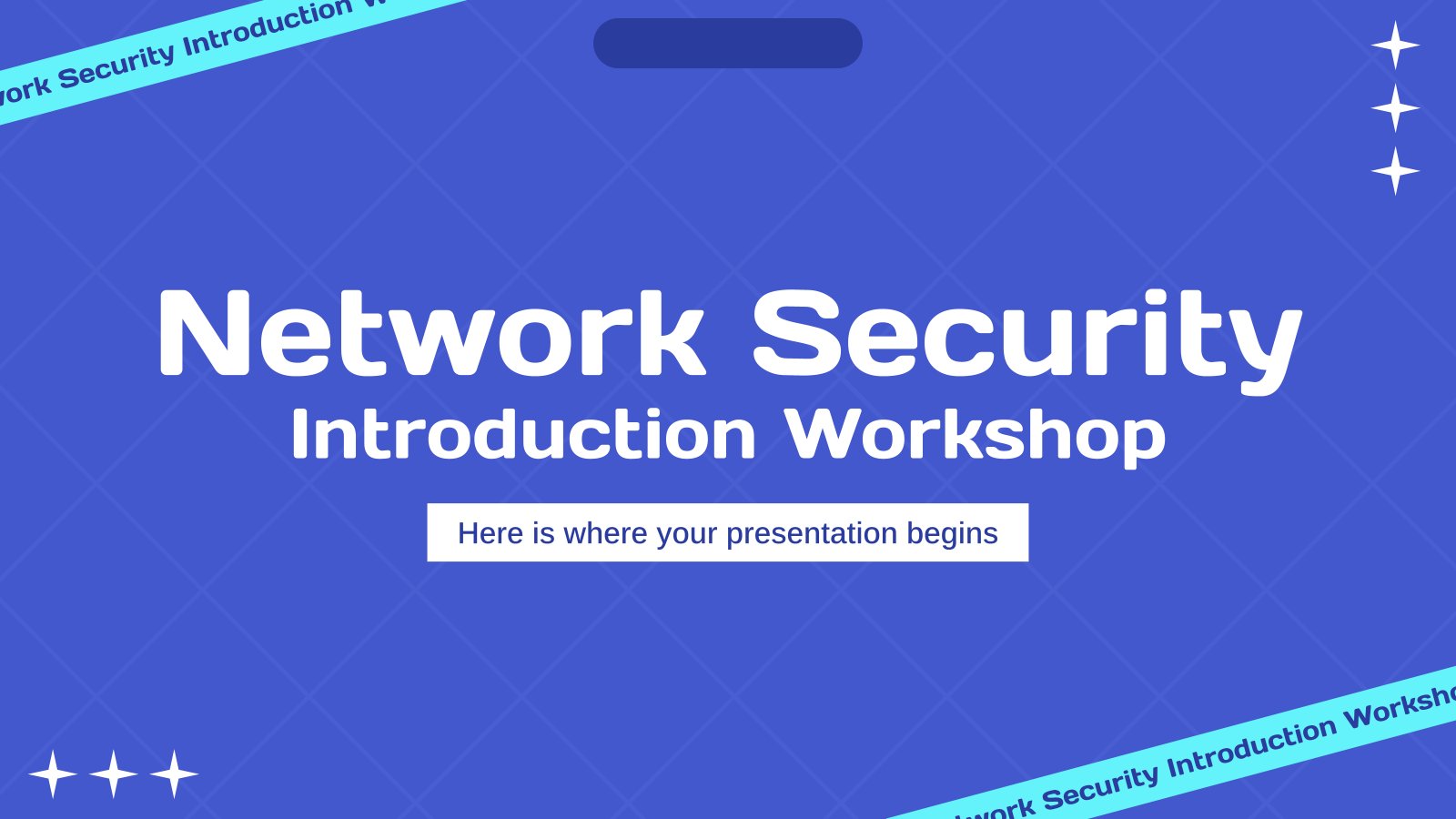
18 templates
Internet Presentation templates
Who would have thought that a simple project to connect some computers from different cities would affect our day to day lives so much internet is the revolution that has shaped the 21st century into what it is today: the era of information. thanks to it you can access these amazing templates for your presentations about internet-related things edit them and post them so that everyone knows about how important this invention is in our lives..

Media Literacy and Digital Citizenship - 8th Grade
Download the "Media Literacy and Digital Citizenship - 8th Grade" presentation for PowerPoint or Google Slides. If you’re looking for a way to motivate and engage students who are undergoing significant physical, social, and emotional development, then you can’t go wrong with an educational template designed for Middle School by...
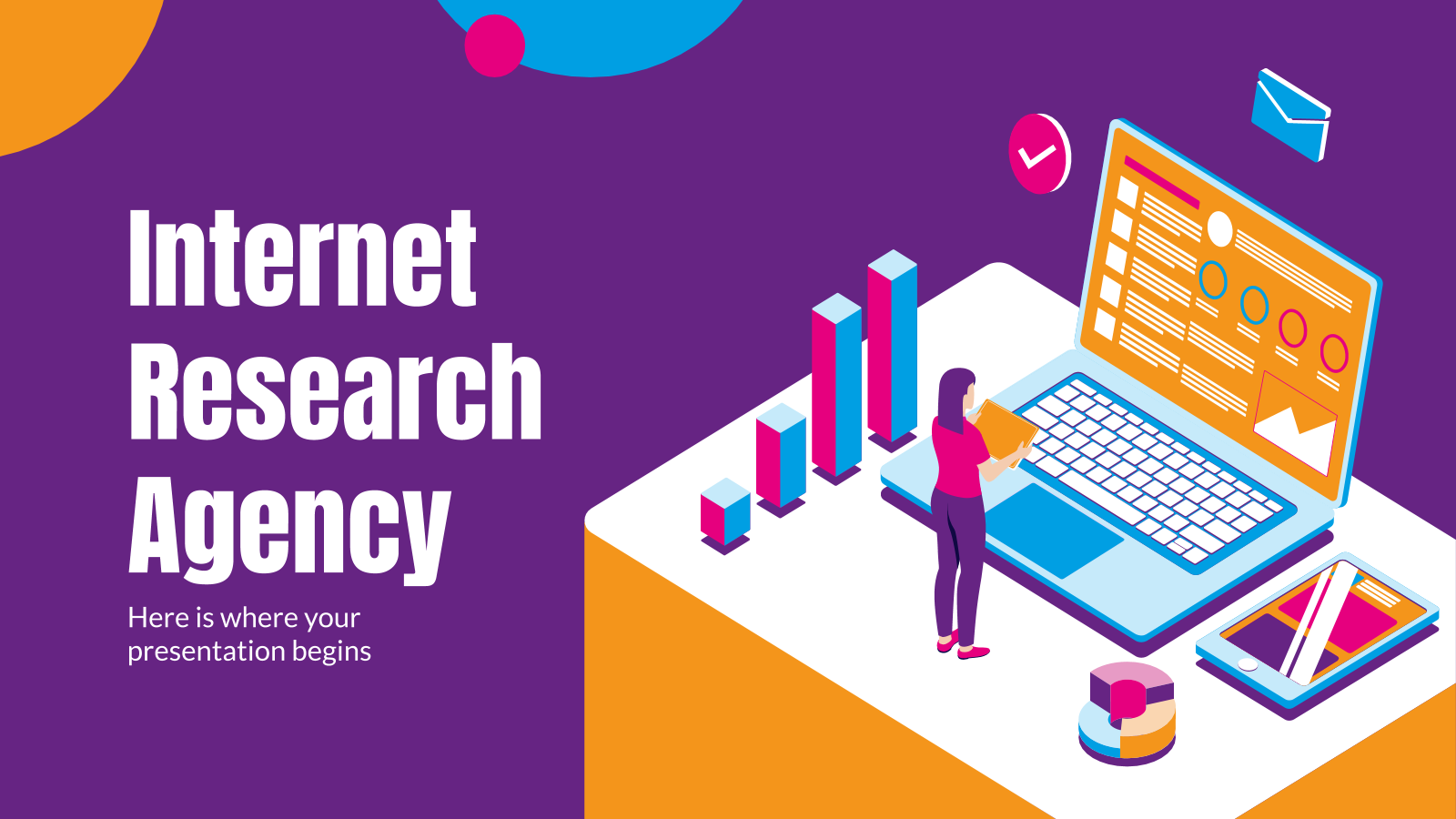
Internet Research Agency
Ready to sell your services as an internet research agency? With this template we give you the tools to leave your potential clients speechless. The purple colour of the background reflects the ambition and wisdom behind your company. Explain what sets you apart, what you do and how you do...
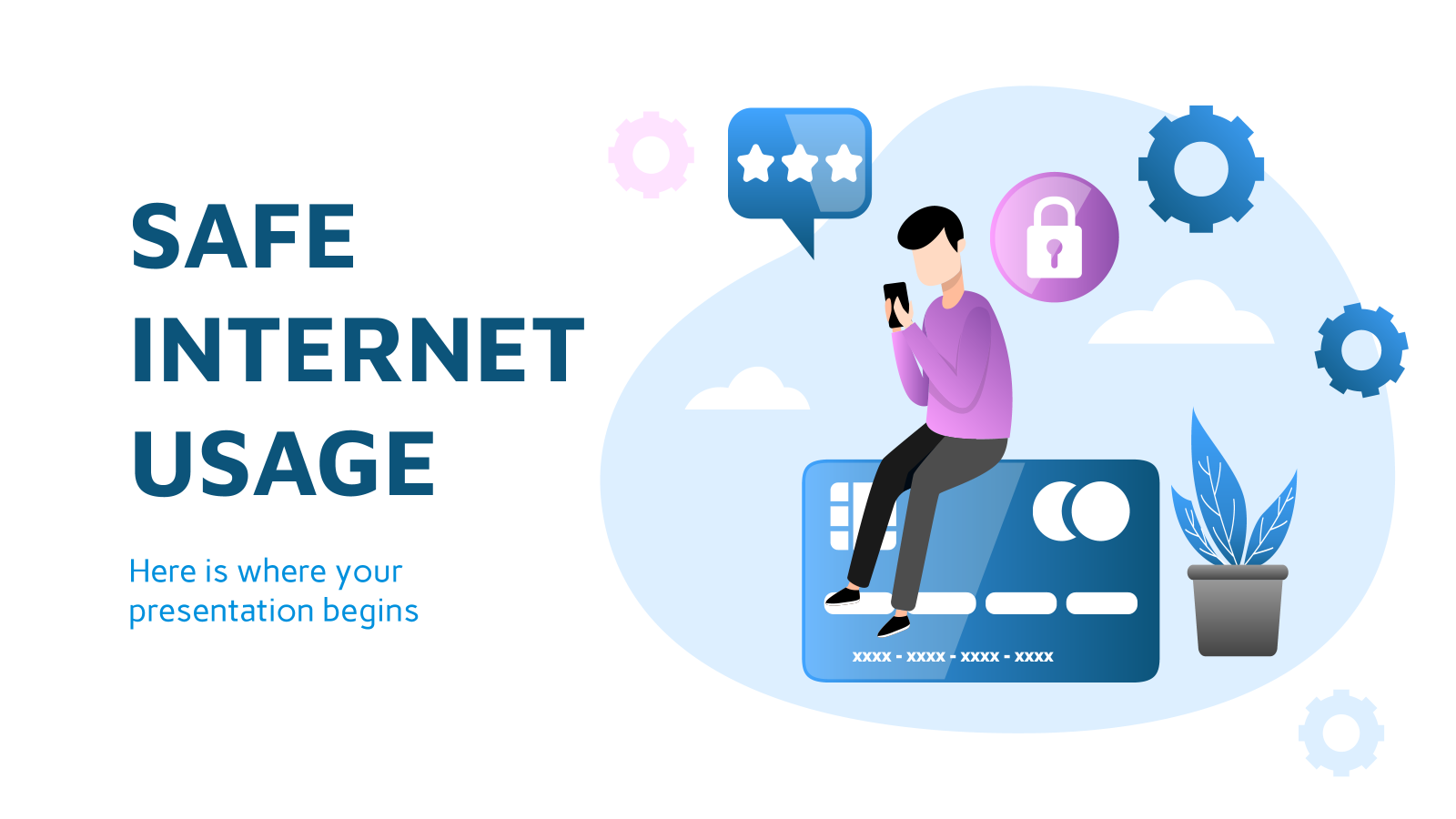
Safe Internet Usage
Online shopping is becoming more and more common, and that is why it is also important to teach how to make a safe use of the internet. In this Slidesgo template we give you the tools so you can explain how to make secure payments with your computer or smartphone....
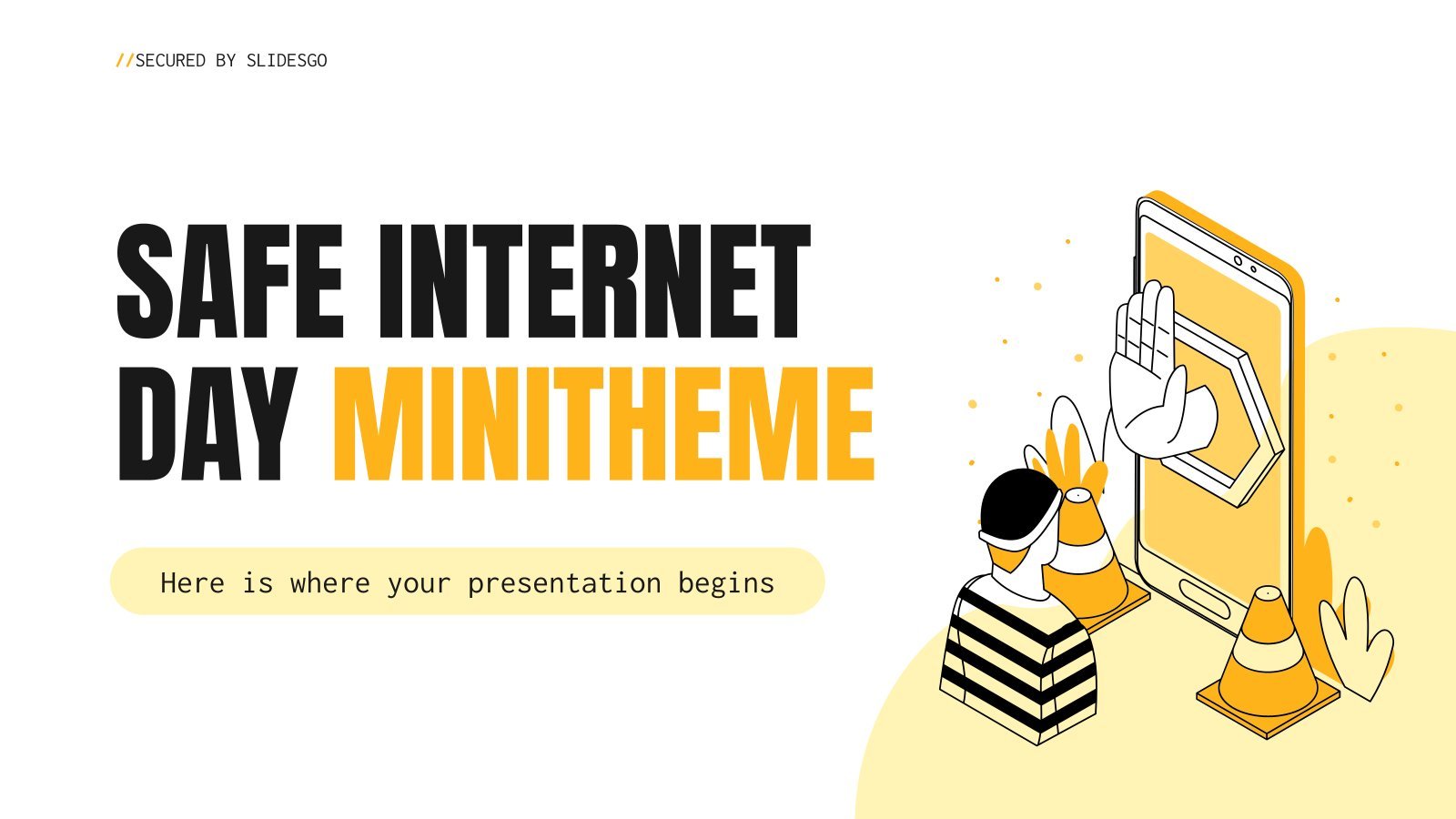
Premium template
Unlock this template and gain unlimited access
Safe Internet Day Minitheme
How safe are your passwords? No, Password123 is not a valid answer… If you want your electronic devices and data to be safe, use this minitheme to speak about the Safe Internet Day! Technologies develop so fast that sometimes we don’t even realize what is going on, so days like...

5G Wireless Technology Pitch Deck
Download the "5G Wireless Technology Pitch Deck" presentation for PowerPoint or Google Slides. Whether you're an entrepreneur looking for funding or a sales professional trying to close a deal, a great pitch deck can be the difference-maker that sets you apart from the competition. Let your talent shine out thanks...
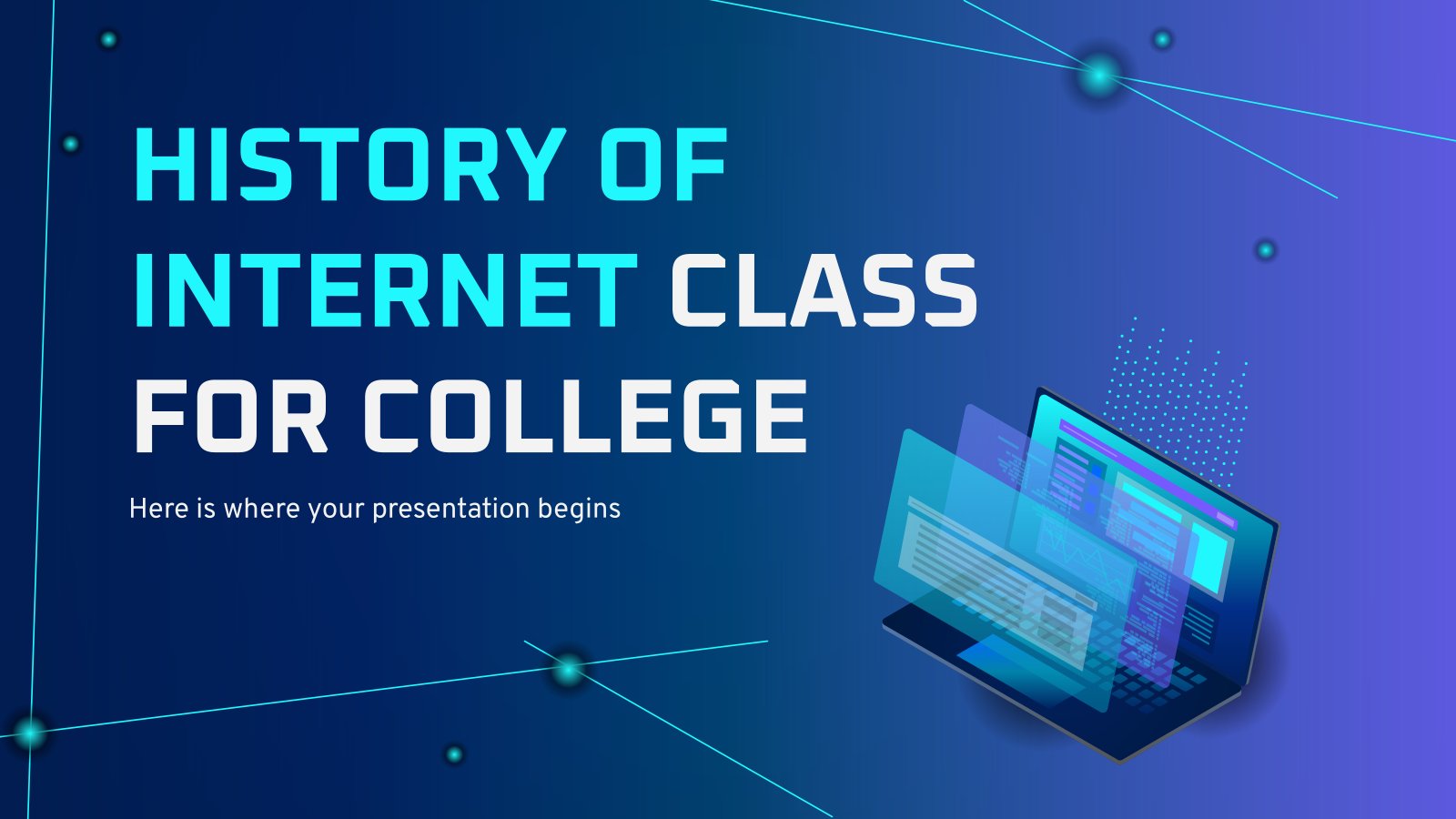
History of Internet Class for College
It was born as a collaborative project to share information between universities and it has now become an essential part of our day-to-day life. It allows global banking, science sharing, it connects us with our friends and family and has allowed everyone to keep working and studying during the lockdown....

Internet Safety and Responsible Technology Use - 4th Grade
Download the "Internet Safety and Responsible Technology Use - 4th Grade" presentation for PowerPoint or Google Slides and easily edit it to fit your own lesson plan! Designed specifically for elementary school education, this eye-catching design features engaging graphics and age-appropriate fonts; elements that capture the students' attention and make...

I'm Feeling Lucky: Searching the Internet
Searching the internet doesn't have to be complicated if you're lucky. With this template you can access the content you need quickly and in a much more entertaining way! The creative, colorful, and unique template is designed to help you find just what you need in the blink of an...
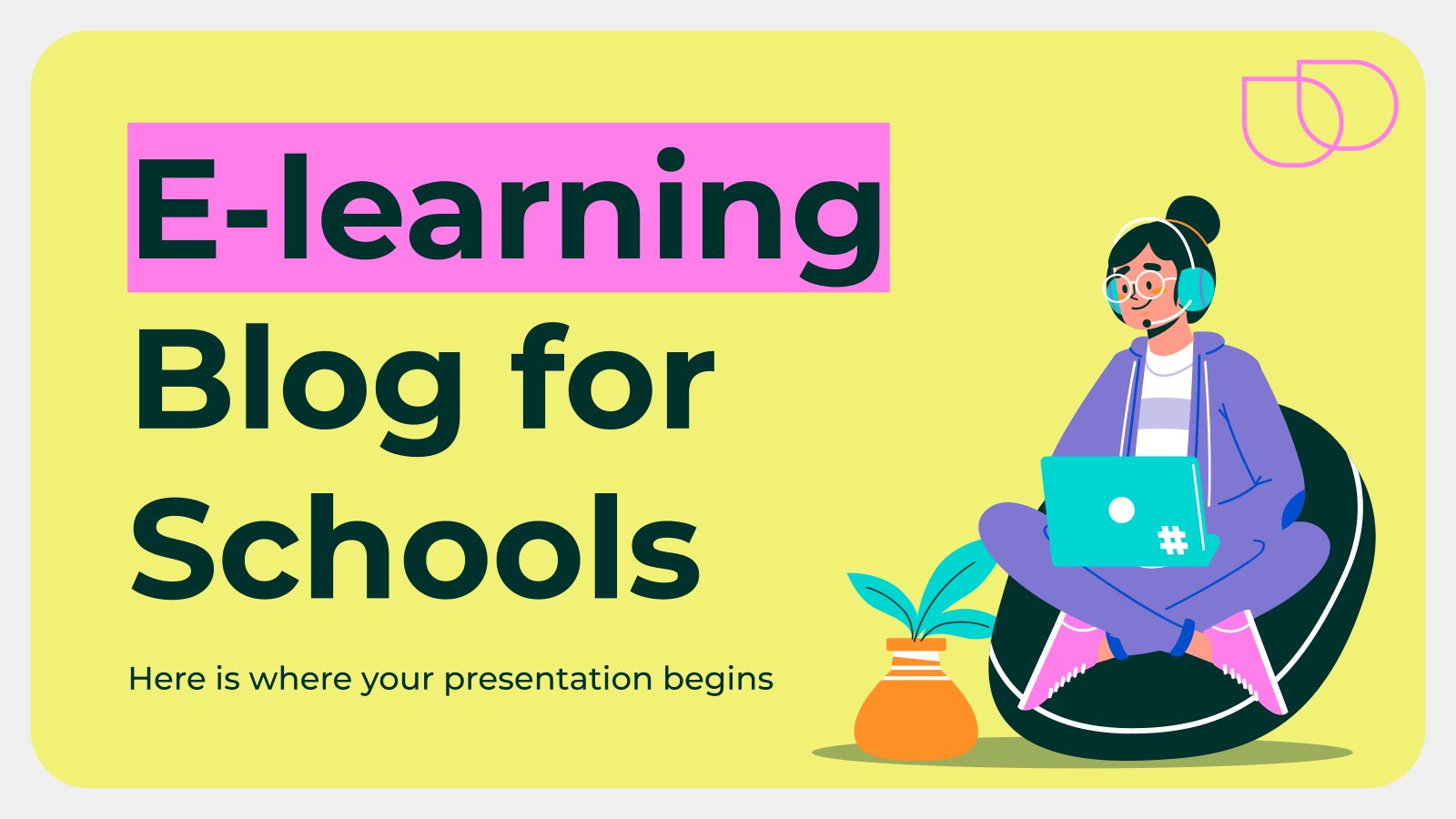
E-learning Blog for Schools
Download the "E-learning Blog for Schools" presentation for PowerPoint or Google Slides. Attention all marketers! Are you looking for a way to make your newsletters more creative and eye-catching for your target audience? This amazing template is perfect for creating the perfect newsletter that will capture your audience's attention from...
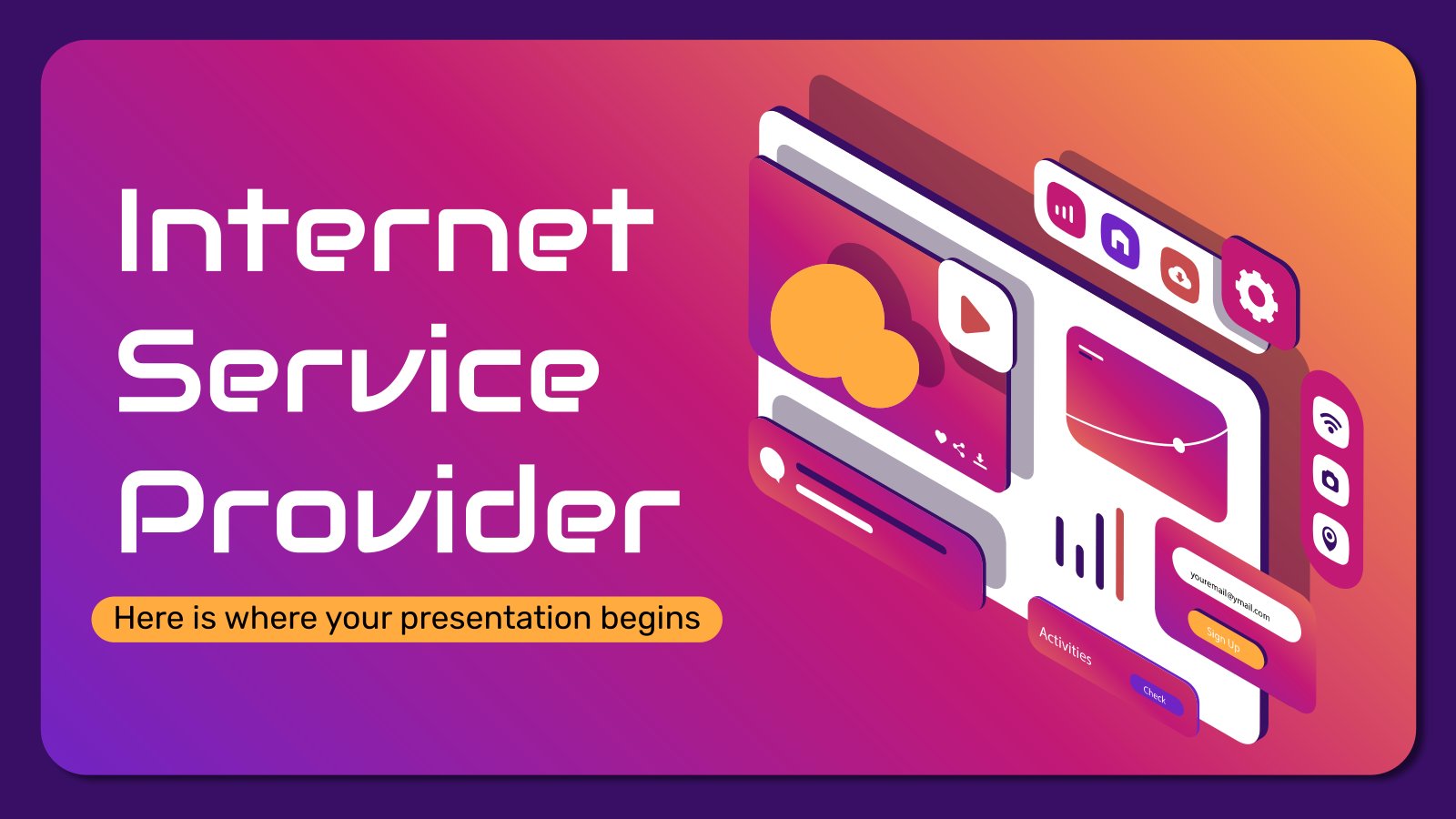
Internet Service Provider Company Profile
Since you're here, on our wonderful website, reading this text, that means you have an ISP. Yeah, for real, you have an ISP! Sorry, let us translate it for you: "internet service provider". Basically, it's the company that provides access to the Internet. Now it makes sense, right? This template...

5G Wireless Technology Agency
Download the "5G Wireless Technology Agency" presentation for PowerPoint or Google Slides. Your agency is set to reach new heights and milestones. Allow us to accompany you on the journey to success with this all-rounded template. No need for typical sales fluff, this template speaks its cutting-edge design loudly. Display...

5G Wireless Technology in Social Media
Download the "5G Wireless Technology in Social Media" presentation for PowerPoint or Google Slides. How do you use social media platforms to achieve your business goals? If you need a thorough and professional tool to plan and keep track of your social media strategy, this fully customizable template is your...
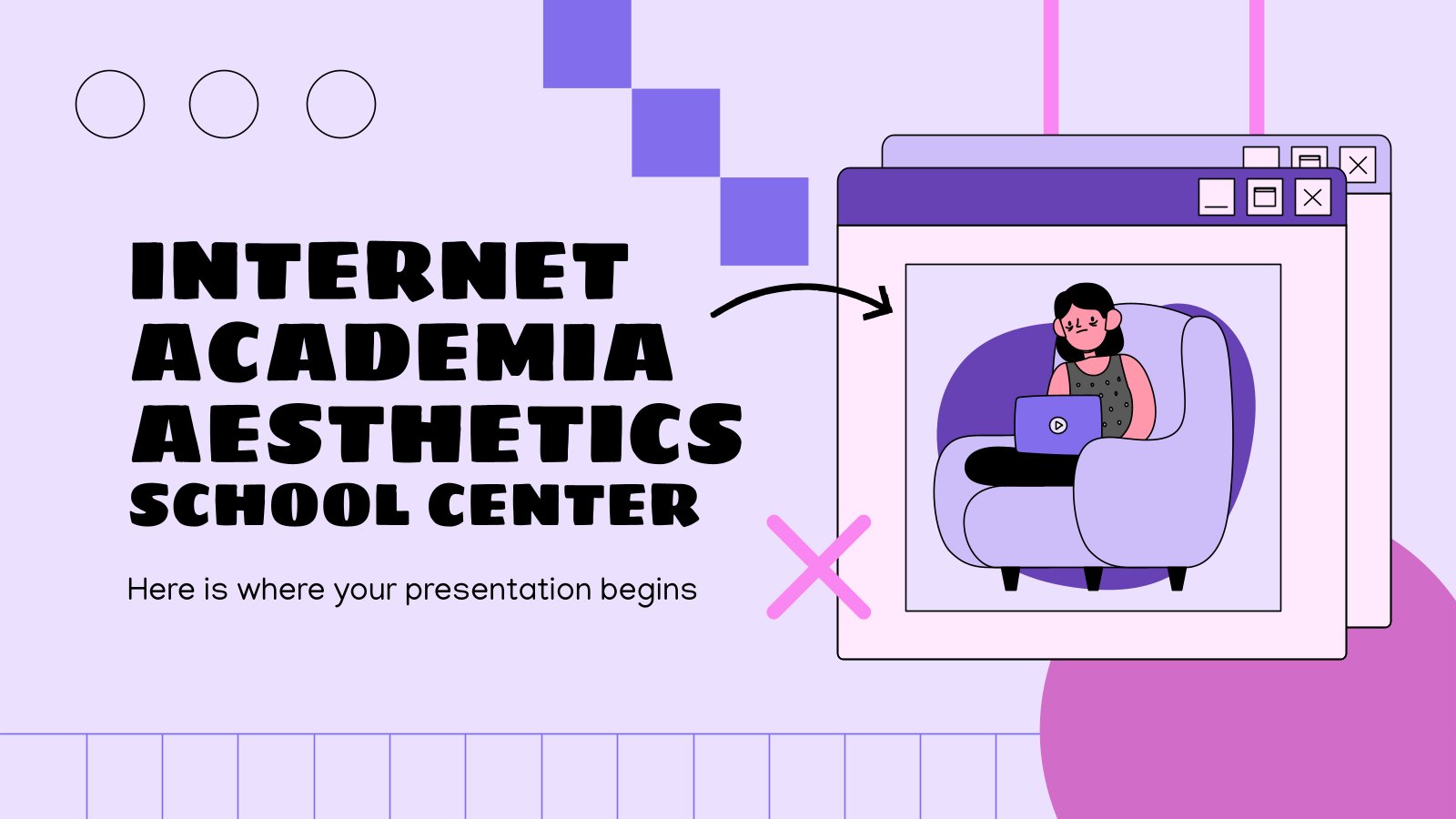
Internet Academia Aesthetics School Center
Thousands of young learners have become online students because of the pandemic and have now fallen in love with it. Being independent, being able to attend lessons from home… the advantages are endless, and there are little disadvantages, so this new way of learning is here to stay! Speak about...

5G Wireless Technology Business Plan
Download the "5G Wireless Technology Business Plan" presentation for PowerPoint or Google Slides. Conveying your business plan accurately and effectively is the cornerstone of any successful venture. This template allows you to pinpoint essential elements of your operation while your audience will appreciate the clear and concise presentation, eliminating any...

Virtual Metaverse Project Proposal
When real life is not enough, when we want to go beyond reality, what can we do? With this futuristic-looking template, you can introduce your audience to the wonderful virtual metaverse! Maybe you're a baker in real life and a bladesmith in a virtual world! Inform about this project, your...

Vibrant Orange Shapes Portfolio
Download the "Vibrant Orange Shapes Portfolio" presentation for PowerPoint or Google Slides. When a potential client or employer flips through the pages of your portfolio, they're not just looking at your work; they're trying to get a sense of who you are as a person. That's why it's crucial to...

Internet Day
Download the "Internet Day" presentation for PowerPoint or Google Slides. The education sector constantly demands dynamic and effective ways to present information. This template is created with that very purpose in mind. Offering the best resources, it allows educators or students to efficiently manage their presentations and engage audiences. With...

Digital Scam Awareness Newsletter
No way! You’re telling us that you have been awarded a prize for being the 10,000th visitor of a website? And you only need to send them a picture of your card to cash it? Unbelievable. We have a better gift for you: this template about digital scamming. Use this...
- Page 1 of 17
New! Make quick presentations with AI
Slidesgo AI presentation maker puts the power of design and creativity in your hands, so you can effortlessly craft stunning slideshows in minutes.

Register for free and start editing online
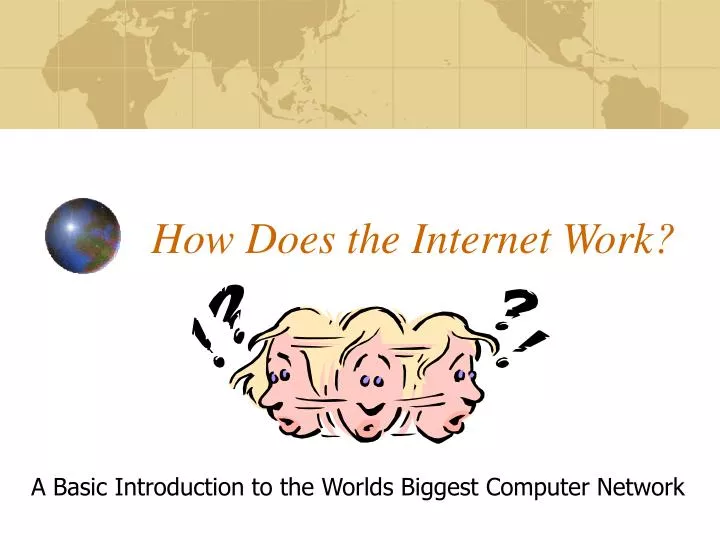
How Does the Internet Work?
Sep 13, 2014
440 likes | 907 Views
How Does the Internet Work?. A Basic Introduction to the Worlds Biggest Computer Network. Aims of this Session. What is the Internet? How does the Internet work? How do I connect to the Internet? What happens when I connect? What do I need to do to safeguard myself and my computer?
Share Presentation
- domain names
- superscan neotrace
- virus scanner
- world wide web
- computer names ip addresses

Presentation Transcript
How Does the Internet Work? A Basic Introduction to the Worlds Biggest Computer Network
Aims of this Session • What is the Internet? • How does the Internet work? • How do I connect to the Internet? • What happens when I connect? • What do I need to do to safeguard myself and my computer? • Where can I get more help?
How did it all Start? • Grew out of an experiment begun in the 1960's by the U.S. Department of Defence • The Web physically consists of your personal computer, web browser software, a connection to an Internet service provider, computers called servers that host digital data and routers to direct the flow of information.
Some Internet Facts • In North America and Europe 1 in 6 people use the Internet • About 20 million households shop online • Over 100 million domains registered to date and rising • Its still only 1% of the worlds total population that own a computer!
How does it all work? Telephone number 0845 123456 Username and Password Your Computer Your Internet Service Provider (ISP)
How does it all work? An Internet Service Provider (ISP) Computers Computers
Part of the World Wide Web Your Computer The World Wide Web
Connecting Computers • Each computer on the Net is connected via a network of cables • Your computer connects to that network using an ISP • When you connect you are given an IP address (172.16.24.10)
Hyper Text (HTML) • The glue that holds the Web together is called hypertext and hyperlinks. This feature allows electronic files on the Web to be linked so that you can easily jump between them
Domain Names • Domain Names are the familiar, easy to remember names for computers on the Internet (such as jubileecentre.net).They correspond to a series of numbers (called Internet Protocol numbers or IP addresses)
Computer Names & IP Addresses • Computer names (domain names) are resolved to IP addresses • A huge database (the biggest in the world!) matches names to numbers Demonstration of Superscan & Neotrace (see http://www.neotrace.com )
Demonstration of Superscan & Neotrace (Visual Trace)
What is a Domain Name? http://www.ianmayer.com/christmas/index.html • http:// short for Hypertext Transfer Protocol • www. is a page on the World Wide Web • ianmayer.com is the domain name • christmas is the directory or folder • index.html is the name of the web page
Finding a Web Page?
What can you Access? • Pages of information • Music • Pictures • Video • Files • Programs • In fact anything that can be stored on a computer!
Caution • Because you are connected to a world wide network and you can access many resources - it make sense that others may also be able to access your information! • Consider protection against misuse • Consider creating policies
The Firewall • A firewall ISOLATES your computer from the Internet using a "wall of code" that inspects each individual "packet" of data as it arrives at either side of the firewall - inbound to or outbound from your computer - to determine whether it should be allowed to pass or be blocked.
What is a Firewall? A firewall ISOLATES your computer from the Internet It can be software or hardware
You need a Firewall if: • Your computer's files need to be accessed remotely across the Internet. • You are operating any sort of Internet server such as Personal Web Server. • You use any sort of Internet-based remote control or remote access program • You want to properly and safely monitor your Internet connection for intrusion attempts.
What is a Virus Scanner? A virus scanner protects your computer from malicious files It is software that checks each file for any hidden dangers!
Virus Protection • Install a good programme • Update it regularly • Always Scan attachments to emails • Don’t introduce any file to your system without checking it first • Keep backups of critical files
Policies and Procedures • Strategic planning of Information Technology (IT) must be aligned with the strategic corporate planning of the organisation • Health & Safety, Data Protection, Security, Support, Training, Purchasing, Backup, Internet & Email use etc. etc.
Further Training Available • Visit: www.idea.org.uk/go • Email:[email protected] • Tel: 0161 247 6172 • Advanced Internet, HTML Training and Real-time Communications • Free, self paced and on-line • You will need to register with MIID first
- More by User
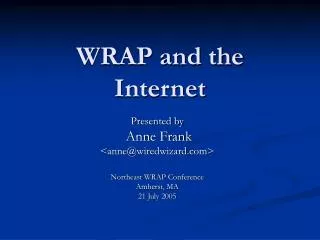
WRAP and the Internet
WRAP and the Internet Presented by Anne Frank <[email protected]> Northeast WRAP Conference Amherst, MA 21 July 2005 Overview Getting Started What can you do on the Internet? Where can you get free Internet access? Browsers and Searching Email Safety Issues
1.09k views • 70 slides

Basic Internet and Networking Concepts
Basic Internet and Networking Concepts Representation and Management of Data on the Internet The Internet and the World-Wide Web TCP/IP and Web Browsers The Internet and the Web Internet means Inter-Network A world-wide network of many LANs (local-area networks)
2.32k views • 66 slides

The New OFCCP Internet Applicant Recordkeeping Rule
The New OFCCP Internet Applicant Recordkeeping Rule Purpose of the Rule Defines “Internet Applicant” – a job seeker applying for work through the Internet or related electronic data technologies from whom contractors must solicit demographic information
1.01k views • 39 slides
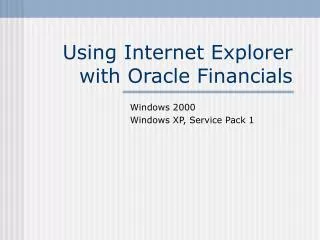
Using Internet Explorer with Oracle Financials
Using Internet Explorer with Oracle Financials. Windows 2000 Windows XP, Service Pack 1. Contents. Recommended Versions of Internet Explorer (IE) Recommended Settings for Internet Explorer (IE) General Tab—Displaying Reports Using Internet Explorer (IE) Adobe Browser Options
1.18k views • 25 slides

Making DoD Enterprise Email , AKO, and other DoD websites work with Internet Explorer on your Windows computer.
Making DoD Enterprise Email , AKO, and other DoD websites work with Internet Explorer on your Windows computer. Presented by: Michael J. Danberry. Last Revision / review : 28 February 2014. Performing these fixes in your Internet Explorer web browser “should” fix access problems.
2.33k views • 35 slides

Chapter 8 The Internet and the World Wide Web
Chapter 8 The Internet and the World Wide Web. Learning Objectives. Discuss how the Internet evolved and what it is like today. Identify the various types of individuals, companies, and organizations involved in the Internet community and explain their purposes.
1.08k views • 59 slides
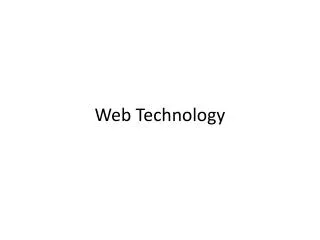
Web Technology
Web Technology. Internet and WWW. What is INTERNET? The Internet is a global system of interconnected computer networks that use the standard Internet protocol suite ( TCP/IP ) to serve several billion users worldwide.
1.8k views • 120 slides
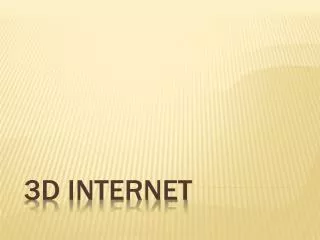
3D INTERNET
3D INTERNET. What is 3D Internet Introduction to 3D Internet Advantage and Disadvantage of 3D internet Applications of 3d internet Example of 3d technology. OBJECTives. What is 3d internet. Combination of two powerful forces The internet 3D Graphics
7.69k views • 11 slides
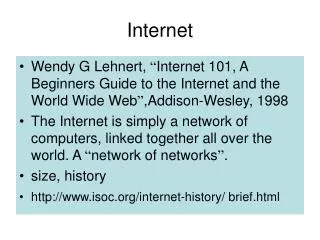
Internet. Wendy G Lehnert, “ Internet 101, A Beginners Guide to the Internet and the World Wide Web ” ,Addison-Wesley, 1998 The Internet is simply a network of computers, linked together all over the world. A “ network of networks ” . size, history
1.93k views • 140 slides
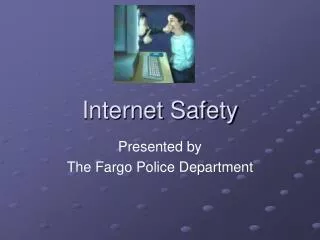
Internet Safety
Internet Safety. Presented by The Fargo Police Department. Who Uses the Internet?. More than 30 million children in the United States use the internet. There are over 165 countries connected to the internet. All of these people have access to your child. Why is the internet so popular?.
1.28k views • 80 slides

The Internet
The Internet. Overview. An introduction to HTML Dynamic HTML Encryption Public Key Infrastructure Development of the Internet Web Browsers. Top 10 uses of Internet at Work (2000). 1 . E-mail : 73 % 2 . Business related research : 35 3 . Academic Research : 23
1.93k views • 147 slides

How Internet Works
How Internet Works. EMC 165 Computer and Communication Networks Feb 3, 2004. Outline. How Internet Instrastructure Works How Routers Work How TCP/IP networks work How Routing Algorithms Work How NAT works. What is the Internet?. It is a global collection of networks, both big and small.
996 views • 71 slides

Node.js and The Internet of Things
A look at where the market of the Internet of Things is and how technologies like Node.js (JavaScript) and the Intel Edison are making it easier to create connected solutions. Learn more at https://losant.com. The major topics include: * What is the Internet of Things * Where is IoT Today * 4 Parts of IoT (Collect, Communicate, Analyze, Act) * Why JavaScript is Good for IoT * How Node.js is Making a Dent in the Internet of Things * What npm Modules are used for Hardware (Johnny-Five, Cylon.js, MRAA) * What is the Intel Edison * How to Best Work with the Edison * Tips for Edison (MRAA, Grove Kit, UPM) * Where the World of JavaScript and IoT is Going.
1.75k views • 31 slides
Numbers, Facts and Trends Shaping Your World
Read our research on:
Full Topic List
Regions & Countries
- Publications
- Our Methods
- Short Reads
- Tools & Resources
Read Our Research On:
Key facts about the abortion debate in America

The U.S. Supreme Court’s June 2022 ruling to overturn Roe v. Wade – the decision that had guaranteed a constitutional right to an abortion for nearly 50 years – has shifted the legal battle over abortion to the states, with some prohibiting the procedure and others moving to safeguard it.
As the nation’s post-Roe chapter begins, here are key facts about Americans’ views on abortion, based on two Pew Research Center polls: one conducted from June 25-July 4 , just after this year’s high court ruling, and one conducted in March , before an earlier leaked draft of the opinion became public.
This analysis primarily draws from two Pew Research Center surveys, one surveying 10,441 U.S. adults conducted March 7-13, 2022, and another surveying 6,174 U.S. adults conducted June 27-July 4, 2022. Here are the questions used for the March survey , along with responses, and the questions used for the survey from June and July , along with responses.
Everyone who took part in these surveys is a member of the Center’s American Trends Panel (ATP), an online survey panel that is recruited through national, random sampling of residential addresses. This way nearly all U.S. adults have a chance of selection. The survey is weighted to be representative of the U.S. adult population by gender, race, ethnicity, partisan affiliation, education and other categories. Read more about the ATP’s methodology .
A majority of the U.S. public disapproves of the Supreme Court’s decision to overturn Roe. About six-in-ten adults (57%) disapprove of the court’s decision that the U.S. Constitution does not guarantee a right to abortion and that abortion laws can be set by states, including 43% who strongly disapprove, according to the summer survey. About four-in-ten (41%) approve, including 25% who strongly approve.

About eight-in-ten Democrats and Democratic-leaning independents (82%) disapprove of the court’s decision, including nearly two-thirds (66%) who strongly disapprove. Most Republicans and GOP leaners (70%) approve , including 48% who strongly approve.
Most women (62%) disapprove of the decision to end the federal right to an abortion. More than twice as many women strongly disapprove of the court’s decision (47%) as strongly approve of it (21%). Opinion among men is more divided: 52% disapprove (37% strongly), while 47% approve (28% strongly).
About six-in-ten Americans (62%) say abortion should be legal in all or most cases, according to the summer survey – little changed since the March survey conducted just before the ruling. That includes 29% of Americans who say it should be legal in all cases and 33% who say it should be legal in most cases. About a third of U.S. adults (36%) say abortion should be illegal in all (8%) or most (28%) cases.

Generally, Americans’ views of whether abortion should be legal remained relatively unchanged in the past few years , though support fluctuated somewhat in previous decades.
Relatively few Americans take an absolutist view on the legality of abortion – either supporting or opposing it at all times, regardless of circumstances. The March survey found that support or opposition to abortion varies substantially depending on such circumstances as when an abortion takes place during a pregnancy, whether the pregnancy is life-threatening or whether a baby would have severe health problems.
While Republicans’ and Democrats’ views on the legality of abortion have long differed, the 46 percentage point partisan gap today is considerably larger than it was in the recent past, according to the survey conducted after the court’s ruling. The wider gap has been largely driven by Democrats: Today, 84% of Democrats say abortion should be legal in all or most cases, up from 72% in 2016 and 63% in 2007. Republicans’ views have shown far less change over time: Currently, 38% of Republicans say abortion should be legal in all or most cases, nearly identical to the 39% who said this in 2007.

However, the partisan divisions over whether abortion should generally be legal tell only part of the story. According to the March survey, sizable shares of Democrats favor restrictions on abortion under certain circumstances, while majorities of Republicans favor abortion being legal in some situations , such as in cases of rape or when the pregnancy is life-threatening.
There are wide religious divides in views of whether abortion should be legal , the summer survey found. An overwhelming share of religiously unaffiliated adults (83%) say abortion should be legal in all or most cases, as do six-in-ten Catholics. Protestants are divided in their views: 48% say it should be legal in all or most cases, while 50% say it should be illegal in all or most cases. Majorities of Black Protestants (71%) and White non-evangelical Protestants (61%) take the position that abortion should be legal in all or most cases, while about three-quarters of White evangelicals (73%) say it should be illegal in all (20%) or most cases (53%).

In the March survey, 72% of White evangelicals said that the statement “human life begins at conception, so a fetus is a person with rights” reflected their views extremely or very well . That’s much greater than the share of White non-evangelical Protestants (32%), Black Protestants (38%) and Catholics (44%) who said the same. Overall, 38% of Americans said that statement matched their views extremely or very well.
Catholics, meanwhile, are divided along religious and political lines in their attitudes about abortion, according to the same survey. Catholics who attend Mass regularly are among the country’s strongest opponents of abortion being legal, and they are also more likely than those who attend less frequently to believe that life begins at conception and that a fetus has rights. Catholic Republicans, meanwhile, are far more conservative on a range of abortion questions than are Catholic Democrats.
Women (66%) are more likely than men (57%) to say abortion should be legal in most or all cases, according to the survey conducted after the court’s ruling.
More than half of U.S. adults – including 60% of women and 51% of men – said in March that women should have a greater say than men in setting abortion policy . Just 3% of U.S. adults said men should have more influence over abortion policy than women, with the remainder (39%) saying women and men should have equal say.
The March survey also found that by some measures, women report being closer to the abortion issue than men . For example, women were more likely than men to say they had given “a lot” of thought to issues around abortion prior to taking the survey (40% vs. 30%). They were also considerably more likely than men to say they personally knew someone (such as a close friend, family member or themselves) who had had an abortion (66% vs. 51%) – a gender gap that was evident across age groups, political parties and religious groups.
Relatively few Americans view the morality of abortion in stark terms , the March survey found. Overall, just 7% of all U.S. adults say having an abortion is morally acceptable in all cases, and 13% say it is morally wrong in all cases. A third say that having an abortion is morally wrong in most cases, while about a quarter (24%) say it is morally acceptable in most cases. An additional 21% do not consider having an abortion a moral issue.

Among Republicans, most (68%) say that having an abortion is morally wrong either in most (48%) or all cases (20%). Only about three-in-ten Democrats (29%) hold a similar view. Instead, about four-in-ten Democrats say having an abortion is morally acceptable in most (32%) or all (11%) cases, while an additional 28% say it is not a moral issue.
White evangelical Protestants overwhelmingly say having an abortion is morally wrong in most (51%) or all cases (30%). A slim majority of Catholics (53%) also view having an abortion as morally wrong, but many also say it is morally acceptable in most (24%) or all cases (4%), or that it is not a moral issue (17%). Among religiously unaffiliated Americans, about three-quarters see having an abortion as morally acceptable (45%) or not a moral issue (32%).
- Religion & Abortion
What the data says about abortion in the U.S.
Support for legal abortion is widespread in many countries, especially in europe, nearly a year after roe’s demise, americans’ views of abortion access increasingly vary by where they live, by more than two-to-one, americans say medication abortion should be legal in their state, most latinos say democrats care about them and work hard for their vote, far fewer say so of gop, most popular.
1615 L St. NW, Suite 800 Washington, DC 20036 USA (+1) 202-419-4300 | Main (+1) 202-857-8562 | Fax (+1) 202-419-4372 | Media Inquiries
Research Topics
- Age & Generations
- Coronavirus (COVID-19)
- Economy & Work
- Family & Relationships
- Gender & LGBTQ
- Immigration & Migration
- International Affairs
- Internet & Technology
- Methodological Research
- News Habits & Media
- Non-U.S. Governments
- Other Topics
- Politics & Policy
- Race & Ethnicity
- Email Newsletters
ABOUT PEW RESEARCH CENTER Pew Research Center is a nonpartisan fact tank that informs the public about the issues, attitudes and trends shaping the world. It conducts public opinion polling, demographic research, media content analysis and other empirical social science research. Pew Research Center does not take policy positions. It is a subsidiary of The Pew Charitable Trusts .
Copyright 2024 Pew Research Center
Terms & Conditions
Privacy Policy
Cookie Settings
Reprints, Permissions & Use Policy

View, manage, and install add-ins for Excel, PowerPoint, and Word
When you enable an add-in, it adds custom commands and new features to Microsoft 365 programs that help increase your productivity. Because add-ins can be used by attackers to do harm to your computer, you can use add-in security settings to help protect yourself.
Note: This article only applies to Microsoft 365 applications running on Windows.
View installed add-ins

You can directly install add-ins from this page or select More Add-ins to explore.
In the Office Add-ins dialog, select My Add-ins tab.
Select an add-in you want to view the details for and right-click to select Add-in details option.
Click a heading below for more information .
Add-in categories explained
Active Application Add-ins Add-ins registered and currently running on your Microsoft 365 program.
Inactive Application Add-ins These are present on your computer but not currently loaded. For example, XML schemas are active when the document that refers to them is open. Another example is the COM add-in: if a COM add-in is selected, the add-in is active. If the check box is cleared, the add-in is inactive.
Document Related Add-ins Template files referred to by open documents.
Disabled Application Add-ins These add-ins are automatically disabled because they are causing Microsoft 365 programs to crash.
Add-in The title of the add-in.
Publisher The software developer or organization responsible for creating the add-in.
Compatibility Look here for any compatibility issues.
Location This file path indicates where the add-in is installed on your computer.
Description This text explains the add-in function.
Note: Microsoft Outlook has one add-in option in the Trust Center: Apply macro security settings to installed add-ins . InfoPath has no security settings for add-ins.
Permanently disable or remove an add-in
To disable or remove an add-in follow these steps:
Select File > Get Add-ins . Alternatively, you can select Home > Add-ins .
In the Office Add-ins dialog, select My Add-ins tab.
Select an add-in you want to remove and right click to select Remove option.
View or change add-in settings
You can see and change add-in settings in the Trust Center, descriptions of which are in the following section. Add-in security settings may have been determined by your organization so not all options may be available to change.
Select File > Get Add-ins .
Select More Add-ins > Manage My Add-ins.
Select Trust Center > Trust Center Settings > Add-ins.
Check or uncheck the boxes you want.
Add-in settings explained
Require Application Add-ins to be signed by Trusted Publisher Check this box to have the Trust Center check that the add-in uses a publisher's trusted signature. If the publisher's signature hasn’t been trusted, the Microsoft 365 program doesn’t load the add-in, and the Trust Bar displays a notification that the add-in has been disabled.
Disable notification for unsigned add-ins (code will remain disabled) When you check the Require Application Extensions to be signed by Trusted Publisher box, this option is no longer grayed out. Add-ins signed by a trusted publisher are enabled, but unsigned add-ins are disabled.
Disable all Application Add-ins (may impair functionality) Check this box if you don't trust any add-ins. All add-ins are disabled without any notification, and the other add-in boxes are grayed out.
Note: This setting takes effect after you exit and restart your Microsoft 365 program.
While working with add-ins, you may need to learn more about digital signatures and certificates , which authenticate an add-in, and trusted publishers , the software developers who often create add-ins.
Manage and install add-ins
Use the following instruction to manage and install add-ins.
To install a new add-in:
You can directly install popular add-ins on the page or go to More Add-ins to explore.
Select the add-in and select Add . Or browse by selecting Store tab in the Office add-in dialog to find other add-ins to install and select Add for that add-in.
To manage your add-ins:
Select File > Get Add-ins and from the bottom, select More Add-ins. Or select Home > Add-ins > More add-ins.
In the Office dialog, select My Add-ins tab. If you are not able to see your add-ins, select Refresh to reload your add-ins.
Select Manage My Add-in to manage and select Upload to browse and add an add-in from your device.
How to cancel a purchased add-in
If you've subscribed to an add-in through the Microsoft 365 Store that you don't want to continue, you can cancel that subscription.
Open the Microsoft 365 application and go to the Home tab of the ribbon.
Select Add-ins and then select More Add-ins > My Add-ins tab to view your existing add-ins.
Select the app you want to cancel and select Manage My Add-ins .
Under the Payment and Billing section choose Cancel Subscription .
Select OK and then Continue .
Once that's complete you should see a message that says "You have cancelled your app subscription" in the comments field of your apps list.
Why is my add-in crashing?
Some add-ins might not be compatible with your organization's IT department policies. If that is the case with add-ins recently installed on your Microsoft 365 program, Data Execution Prevention (DEP) will disable the add-in and the program might crash.
Learn more about DEP
Get a Microsoft 365 Add-in for Outlook
Get a Microsoft 365 Add-in for Project
Taking linked notes
If you're looking for Help on linking notes in OneNote to a Word or PowerPoint document, see Take linked notes .
Excel Windows Add-ins
If you're looking for Help on specific Excel Add-ins, such as Solver or Inquire, see Help for Excel for Windows add-ins .
If you're looking for additional help with Excel add-ins using the COM Add-ins dialog box, see Add or remove add-ins in Excel .
Get a Microsoft 365 Add-in for Excel

Need more help?
Want more options.
Explore subscription benefits, browse training courses, learn how to secure your device, and more.

Microsoft 365 subscription benefits

Microsoft 365 training

Microsoft security

Accessibility center
Communities help you ask and answer questions, give feedback, and hear from experts with rich knowledge.

Ask the Microsoft Community

Microsoft Tech Community

Windows Insiders
Microsoft 365 Insiders
Find solutions to common problems or get help from a support agent.

Online support
Was this information helpful?
Thank you for your feedback.

IMAGES
VIDEO
COMMENTS
As our chart shows, most of the world's population has to live with only slightly free internet. According to the yearly report by Freedom House, 31 of the 70 assessed countries only have partial ...
The index seeks to measure the extent to which the internet is not only accessible and affordable, but also relevant to all, allowing usage that enables positive social and economic outcomes. It assesses the performance of 120 countries across four categories: Accessibility, Affordability, Relevance and Readiness. Each of these incorporates key indicators of internet inclusion, including ...
November 11, 2019. Source: University of Birmingham. Summary: Free Internet access must be considered as a human right, as people unable to get online -- particularly in developing countries ...
AI-enhanced title and description. Nisarg Hande. Outernet is a proposed global satellite network that will provide free internet access to all people around the world by broadcasting data from hundreds of cube satellites in space. It aims to address the lack of internet access for over 60% of the global population, especially in remote areas ...
The annual survey conducted by Freedom House offers an analysis of internet freedom around the world. The Freedom on the Net reports produced by the organisation feature an in-depth descriptive text and a numeric country-by-country ranking and assessment of online freedom. The survey's results are transmitted into an interactive map that highlights each country's levels of internet freedom ...
The Global Connectivity Report 2022 takes stock of the progress in digital connectivity over the past three decades. It provides a detailed assessment of the current state of connectivity and how close the world is to achieving universal and meaningful connectivity, using a unique analytical framework. It goes on to showcase solutions and good ...
Published by Ani Petrosyan , Sep 21, 2023. In 2022, Iceland was the worldwide leader in terms of internet freedom. The country ranked first with 95 index points in the Freedom House Index, where ...
Internet connectivity is increasingly being seen as a human right in our digital world. Today, most of us can't imagine a world without the Internet, yet only 30% of the world has access to it. Meanwhile, over 85% of the world has cellular coverage and as mobile phones and smartphones become increasingly cheaper, more people are able to access the Internet.
Internet access has an important impact on innovation, society development, and the economy of the country. The free connectivity to internet plays a vital part on government services, working practice, and efficiency of delivering various services to the country citizens. With the availability of cheap wireless technologies such as Wi-Fi, achieving country-wide free connectivity is not ...
The Internet, a global network of networks, is a remarkably complex technical system built on the creative contributions of scientists around the world from the 1950s to the present. Throughout its evolution, the Internet and other networks have been promoted by governments, researchers, educators, and individuals as tools for meeting a range ...
In part because it comes into practice before scientists can assess its effects and implications, so there is always a gap between social change and its understanding. For instance, media often report that intense use of the Internet increases the risk of alienation, isolation, depression, and withdrawal from society.
Internet Access as a Pragmatic Necessity for Other Rights. One key reason for thinking that internet access is an essential social good is because it is "pragmatically essential" for protecting, promoting, and in many cases, exercising certain human rights (Reglitz 2020: 316).. Consider the right to freedom of expression—that is, the right to "seek, receive, and impart information and ...
Unpacking the internet-and-development nexus. Theoretically internet access can drive economic development through its impacts on both the supply-side and the demand-side of an economy. Digital connectivity can directly affect the productivity of firms, workers, and other inputs in the production process. For example, access to internet-based ...
Internet users worldwide 2014-2029. Number of internet users worldwide from 2014 to 2029 (in millions) Countries with the highest number of internet users 2023. Countries with the highest number ...
Published: Sep 1, 2023. The provision of free internet access is a topic of growing importance in our increasingly digital society. The internet has transformed the way we communicate, access information, and engage with the world. However, access to the internet remains unequal, with many individuals and communities facing barriers due to cost.
About Press Copyright Contact us Creators Advertise Developers Terms Privacy Policy & Safety How YouTube works Test new features NFL Sunday Ticket Press Copyright ...
Download the "Internet Day" presentation for PowerPoint or Google Slides. The education sector constantly demands dynamic and effective ways to present information. This template is created with that very purpose in mind. Offering the best resources, it allows educators or students to efficiently manage their presentations and engage audiences ...
Presentation Transcript. 1 Introduction to the Internet. Learning Outcomes. Describe the Evolution of the Internet and the Web Explain the Need for Web Standards Identify Networking Protocols Define Addressing and Domain Names Describe HTML, XHTML, and HTML5 Describe Popular Trends in the Use of the Web.
A colorful, high-energy planning presentation template is the best way to get your team excited about business strategy and the months ahead. Use this presentation plan to share past achievements, new strategy, and goals for the future. W W A colorful, high-energy planning presentation te….
Chapter 8 The Internet and the World Wide Web. Chapter 8 The Internet and the World Wide Web. Learning Objectives. Discuss how the Internet evolved and what it is like today. Identify the various types of individuals, companies, and organizations involved in the Internet community and explain their purposes. 1.08k views • 59 slides
Drop your Topics here...Instagram I'd @manishachauhan379
Suitable for PowerPoint and Google Slides. Download your presentation as a PowerPoint template or use it online as a Google Slides theme. 100% free, no registration or download limits. Get these internet templates to create dynamic presentations that showcase the exciting world of the web.
Women (66%) are more likely than men (57%) to say abortion should be legal in most or all cases, according to the survey conducted after the court's ruling. More than half of U.S. adults - including 60% of women and 51% of men - said in March that women should have a greater say than men in setting abortion policy.
When you install and use an add-in, it adds custom commands and extends the features of your Microsoft 365 programs to help increase your productivity. Note: This article only applies to add-ins in Excel, PowerPoint, and Word. For guidance on how to view, install, and manage add-ins in Outlook, see Use add-ins in Outlook.